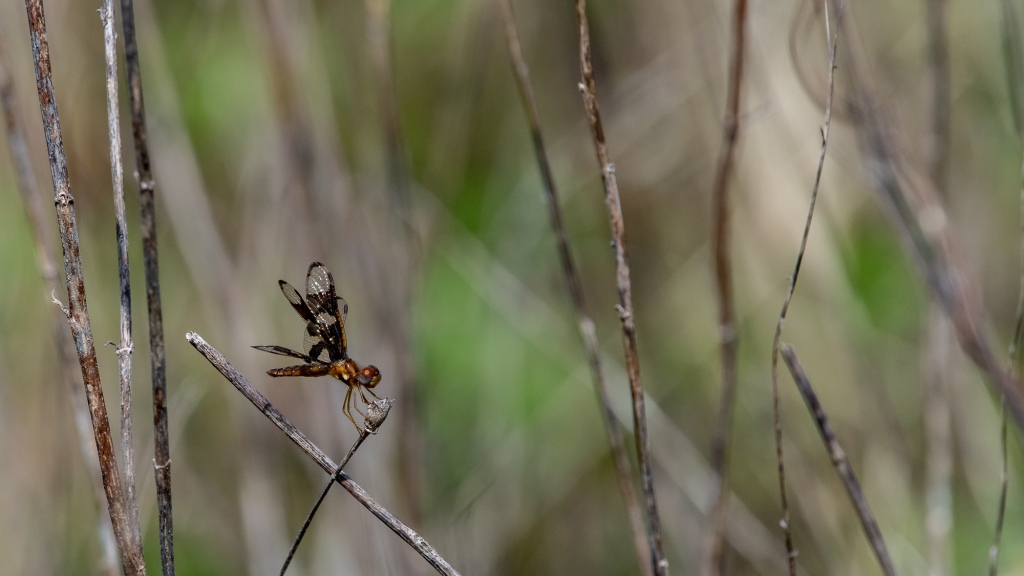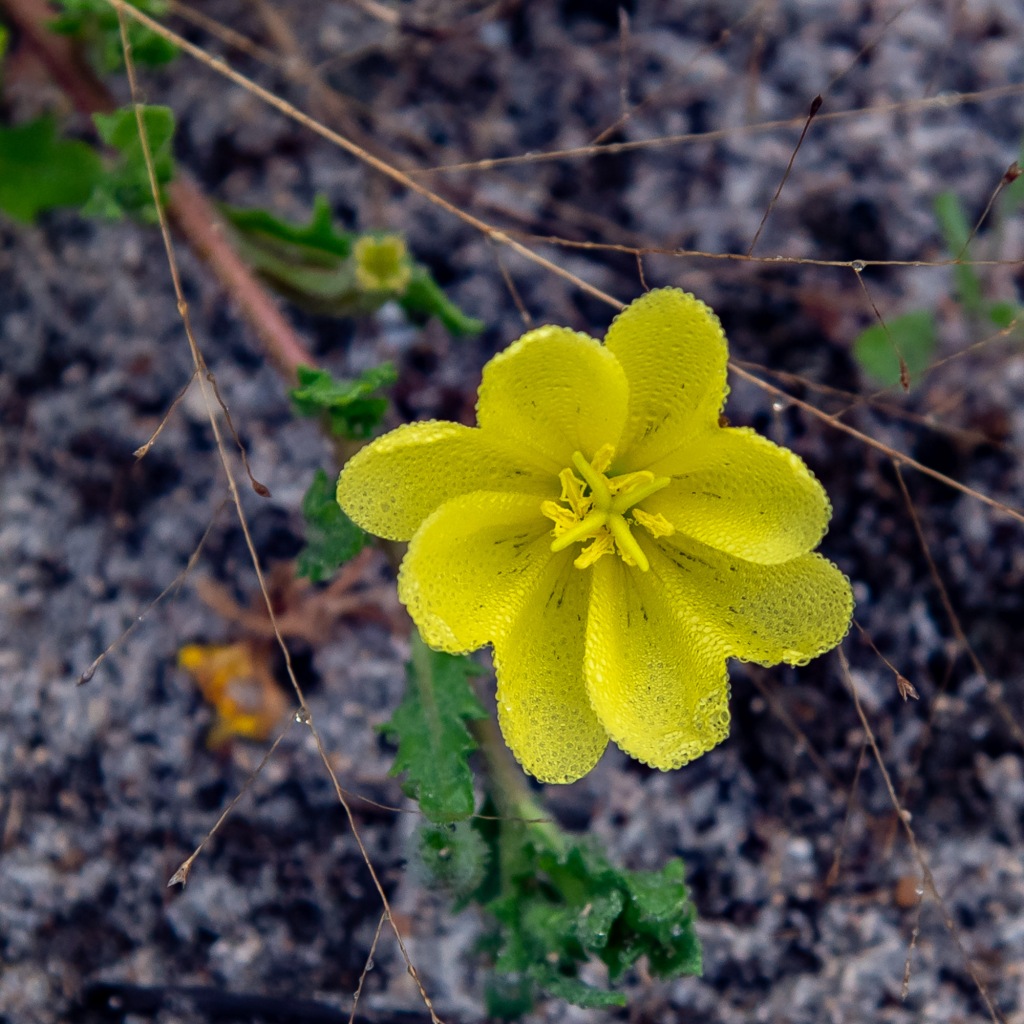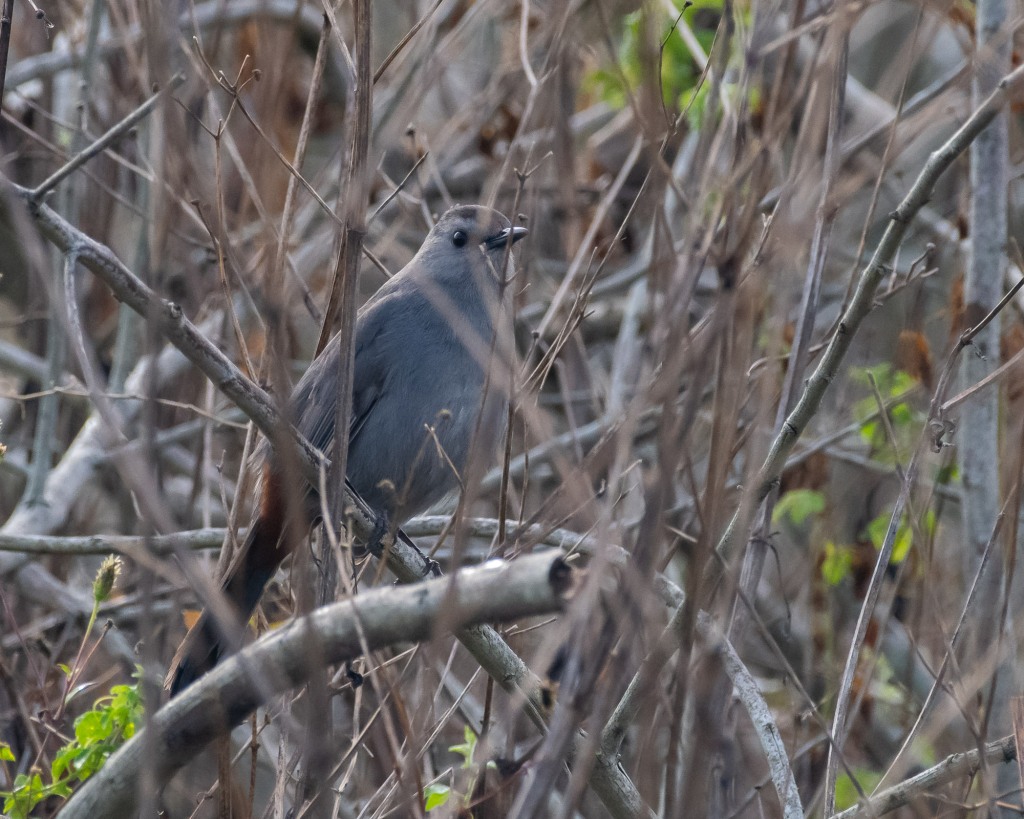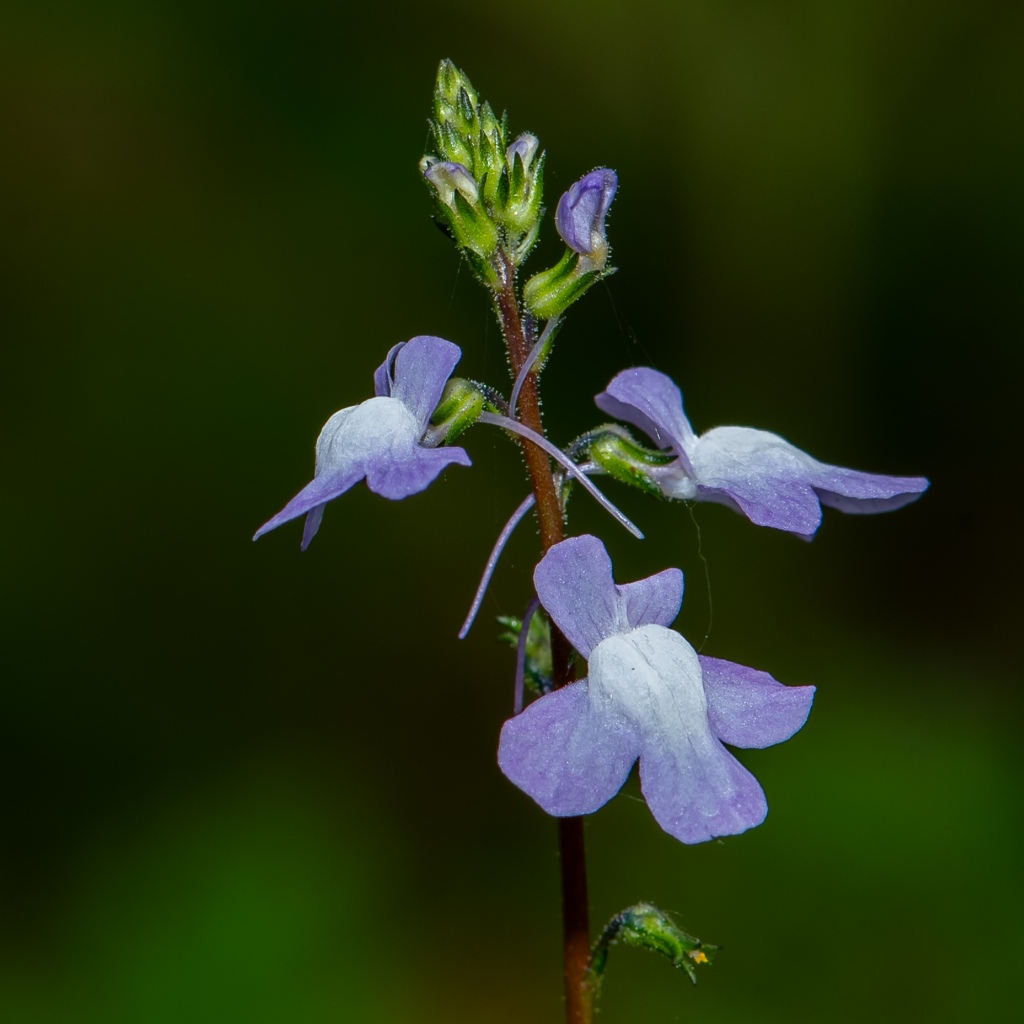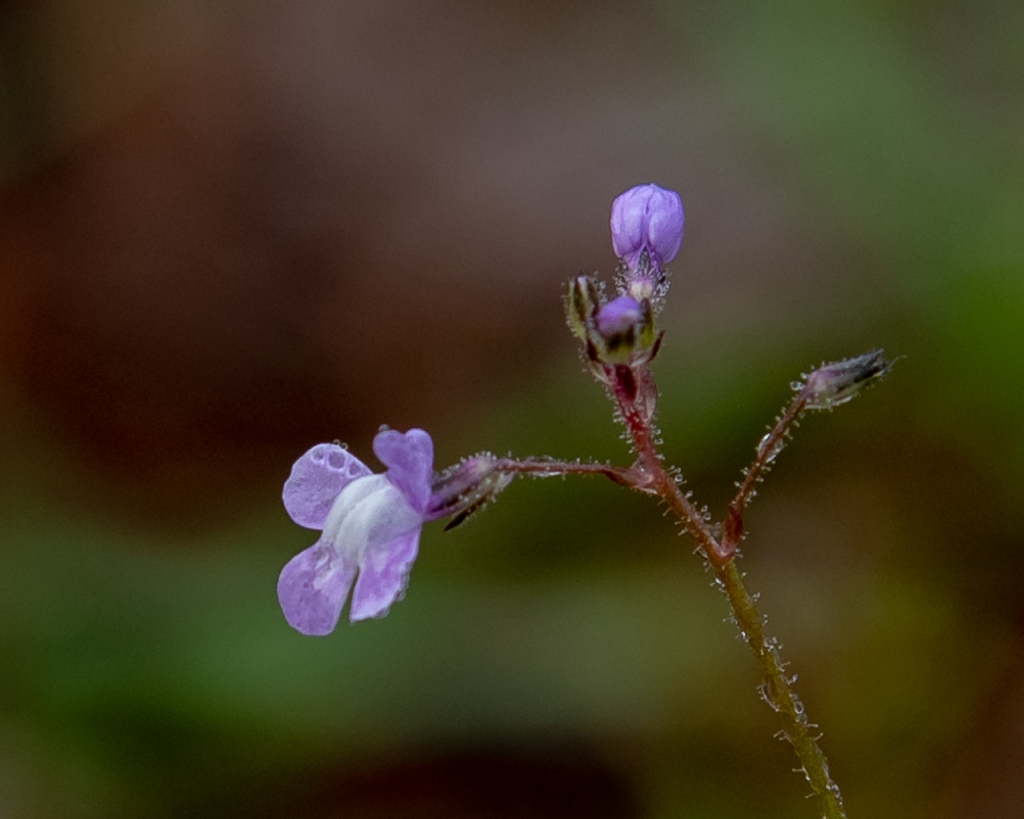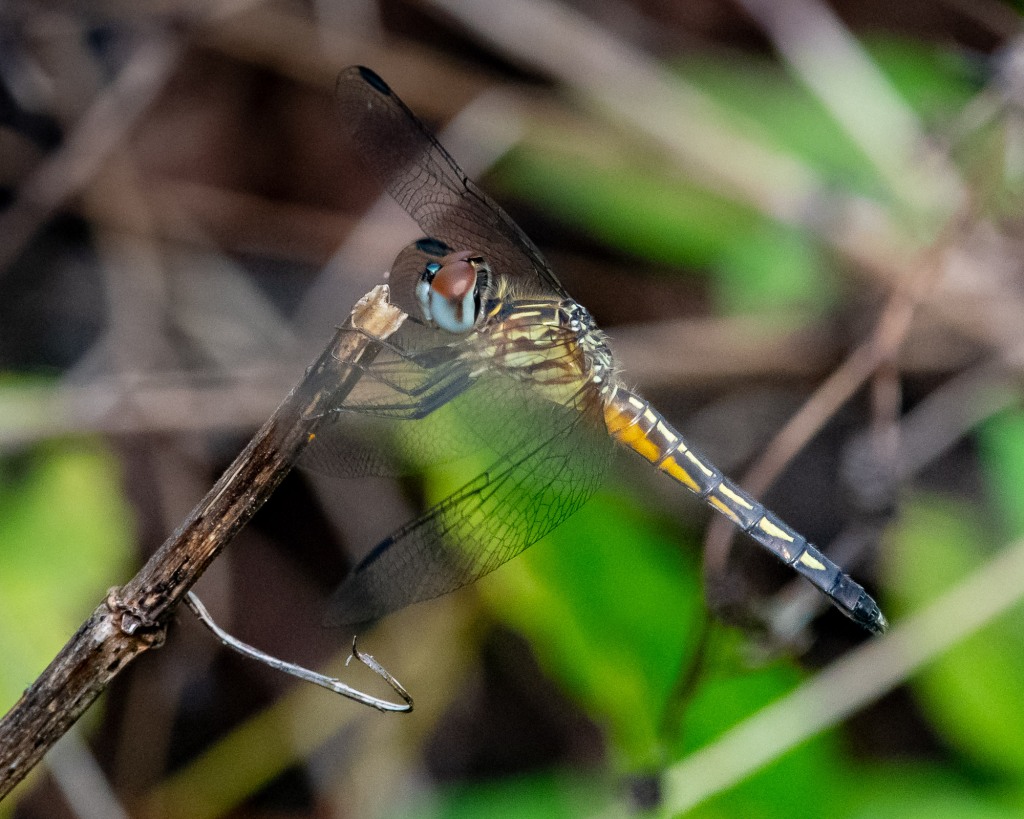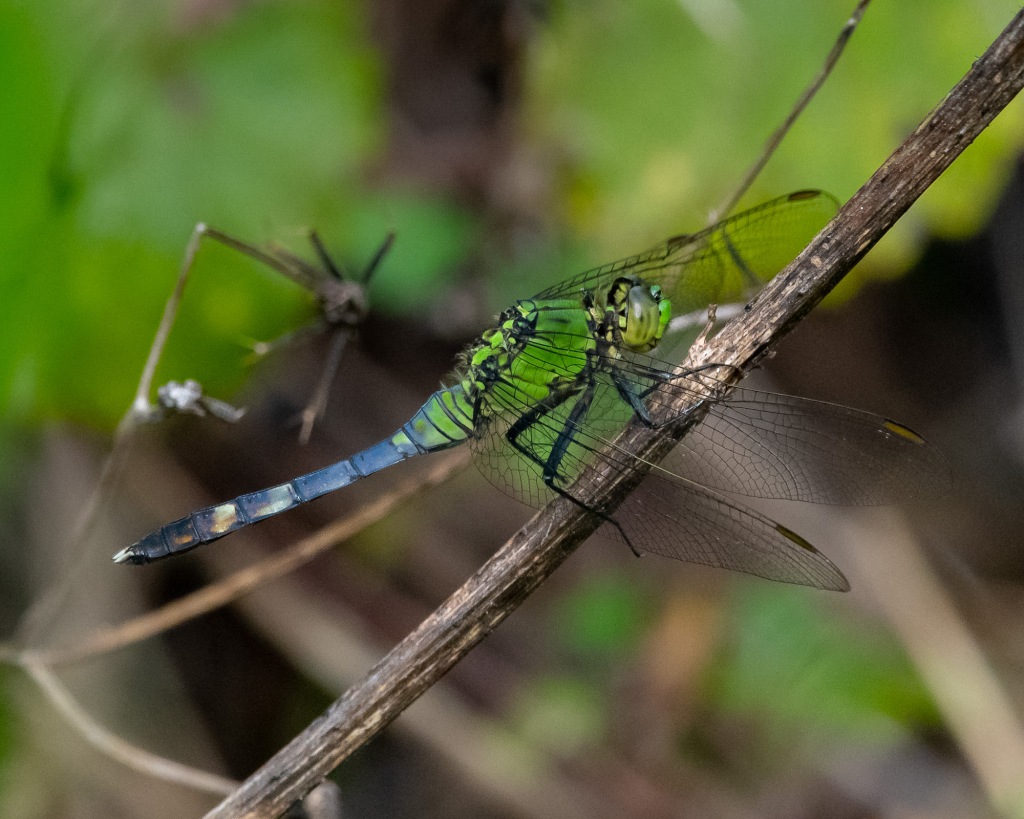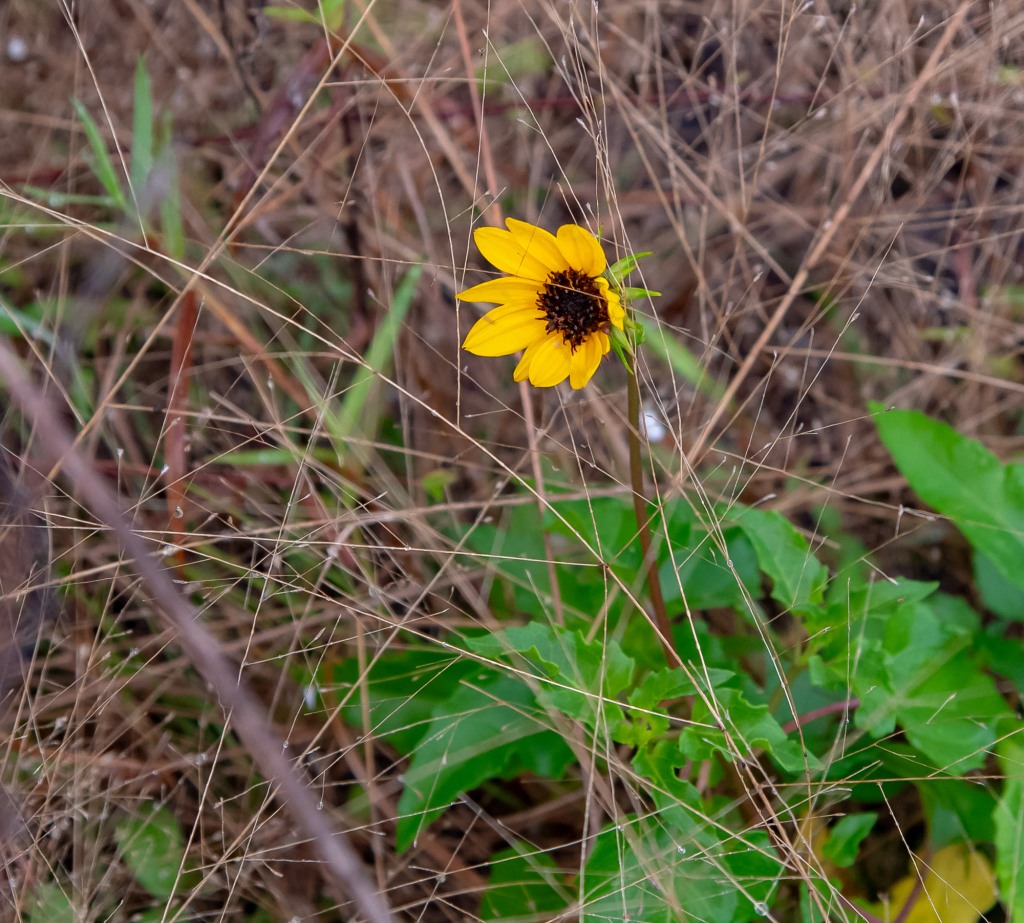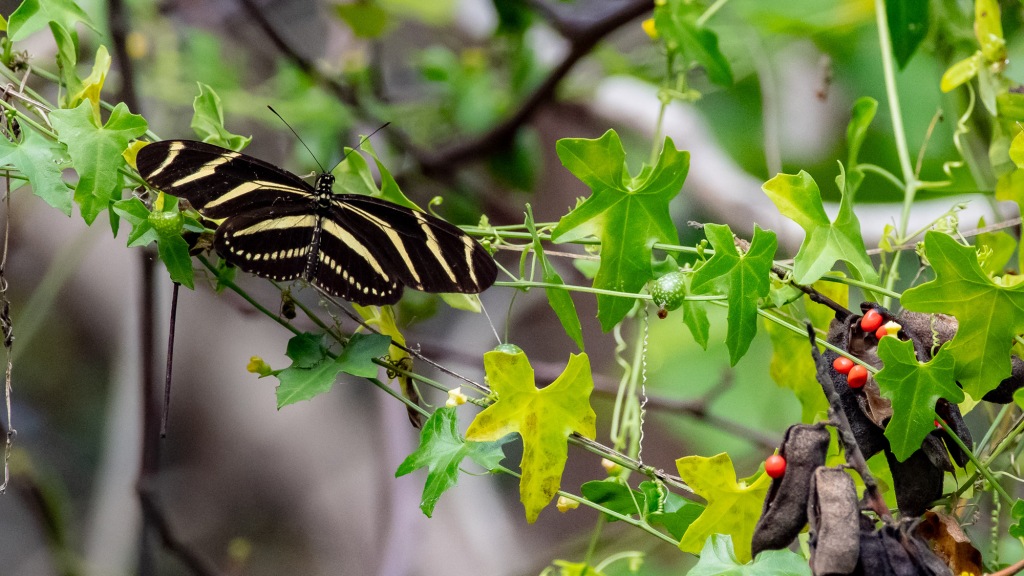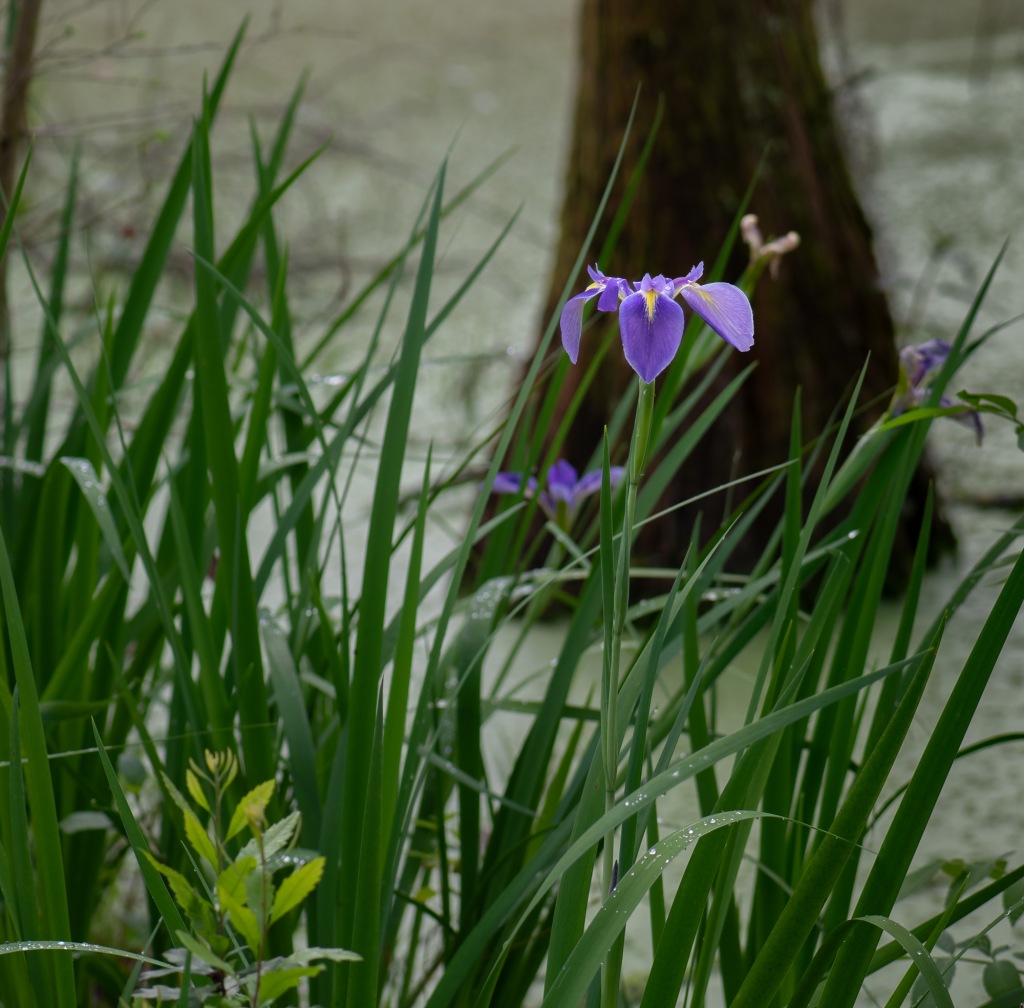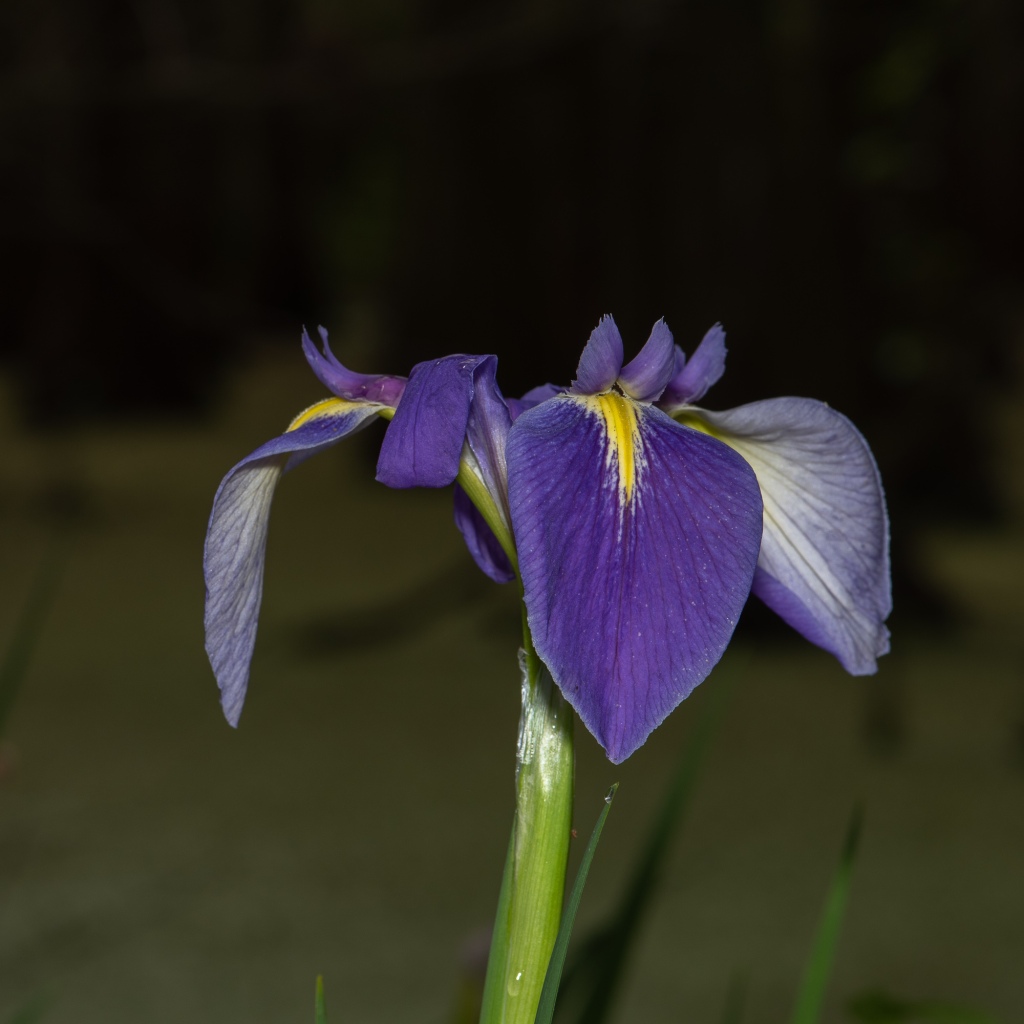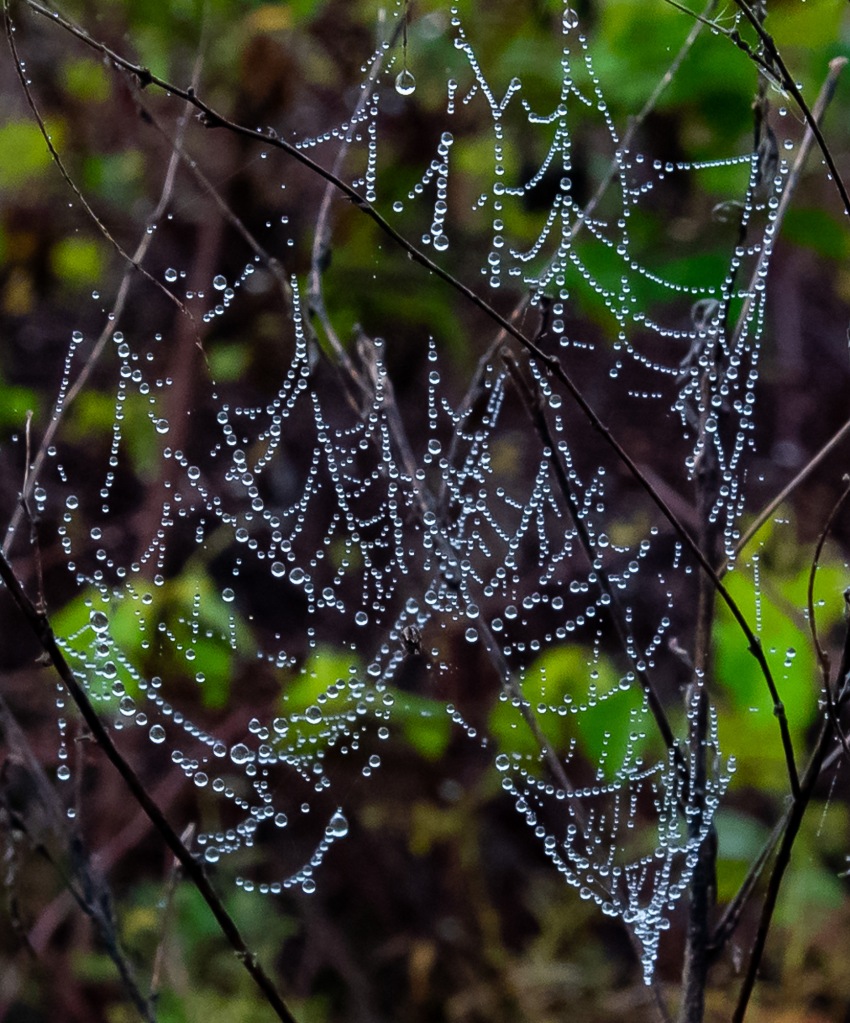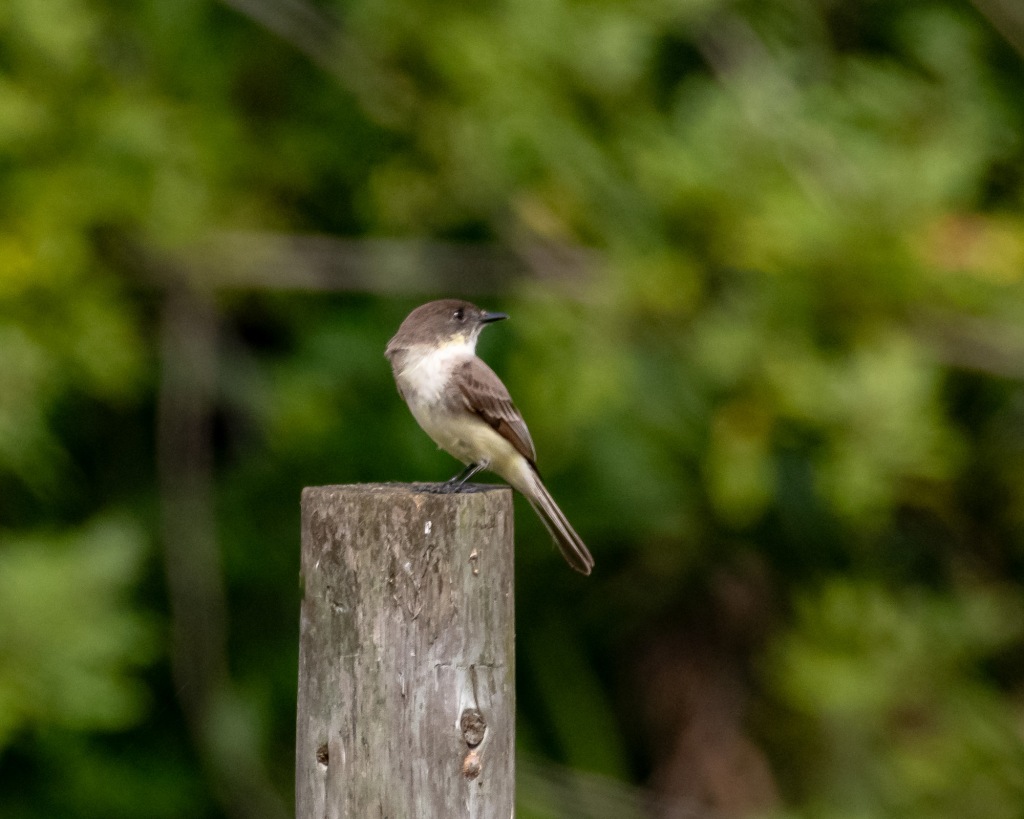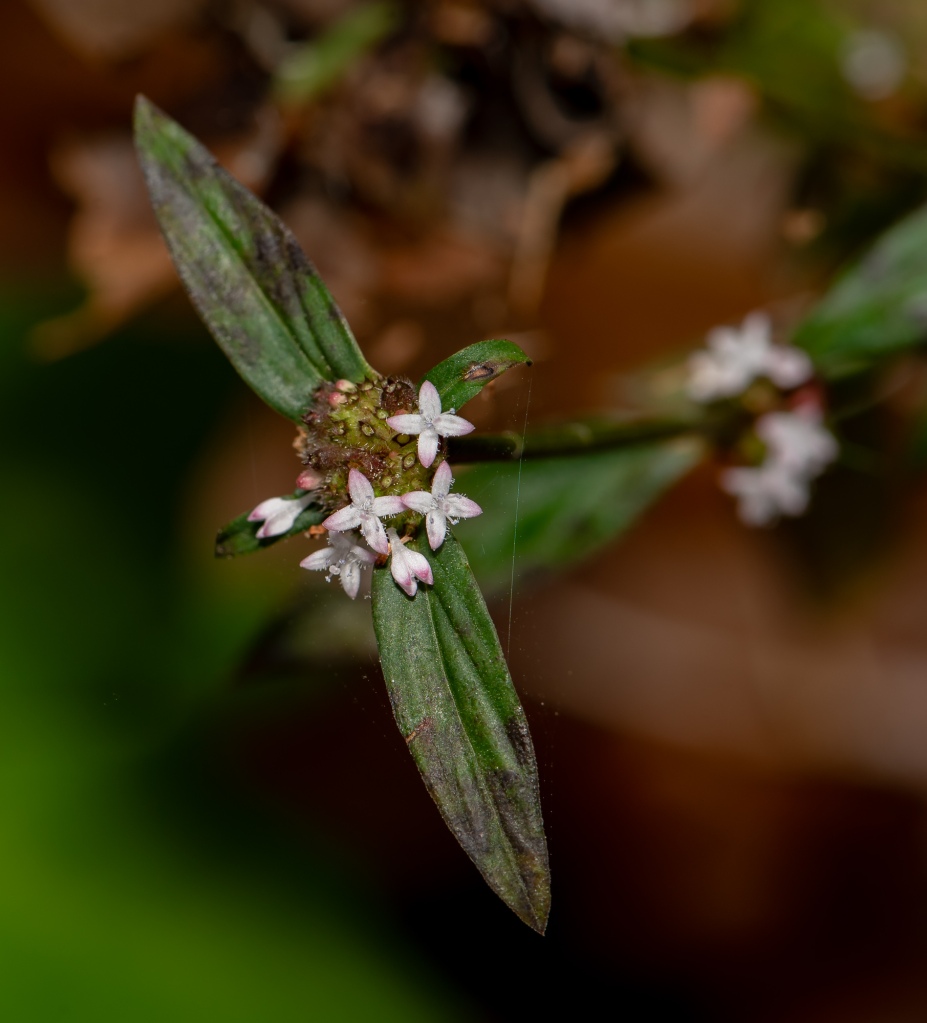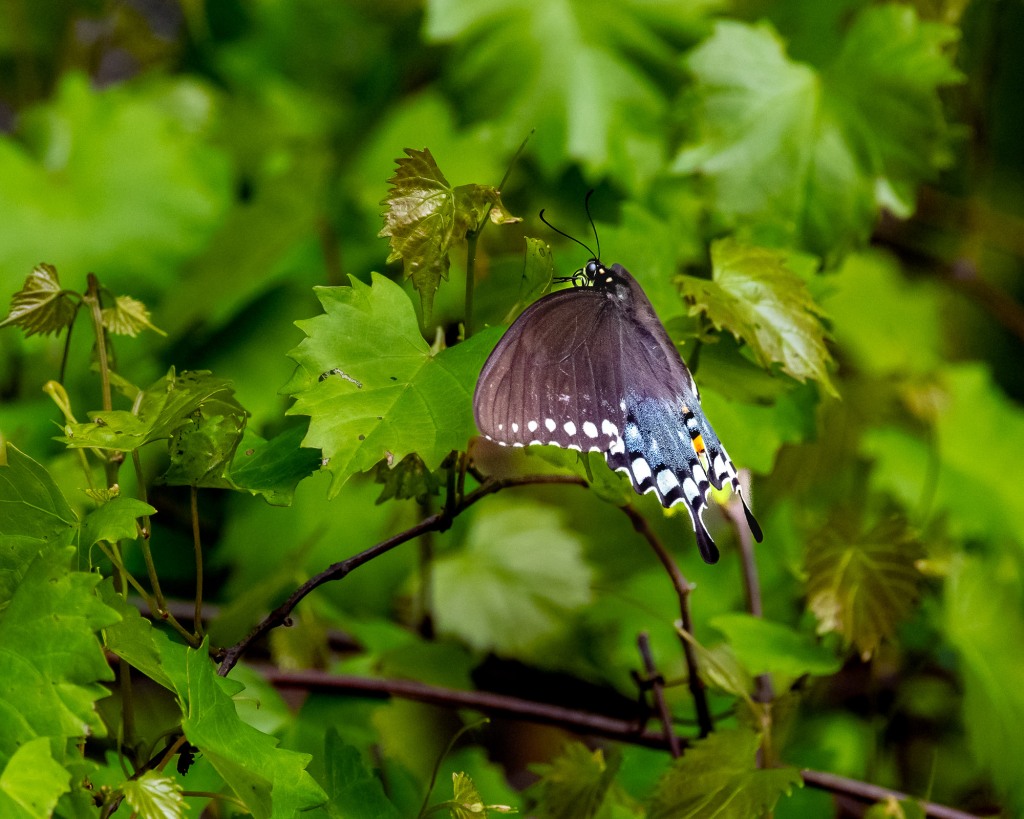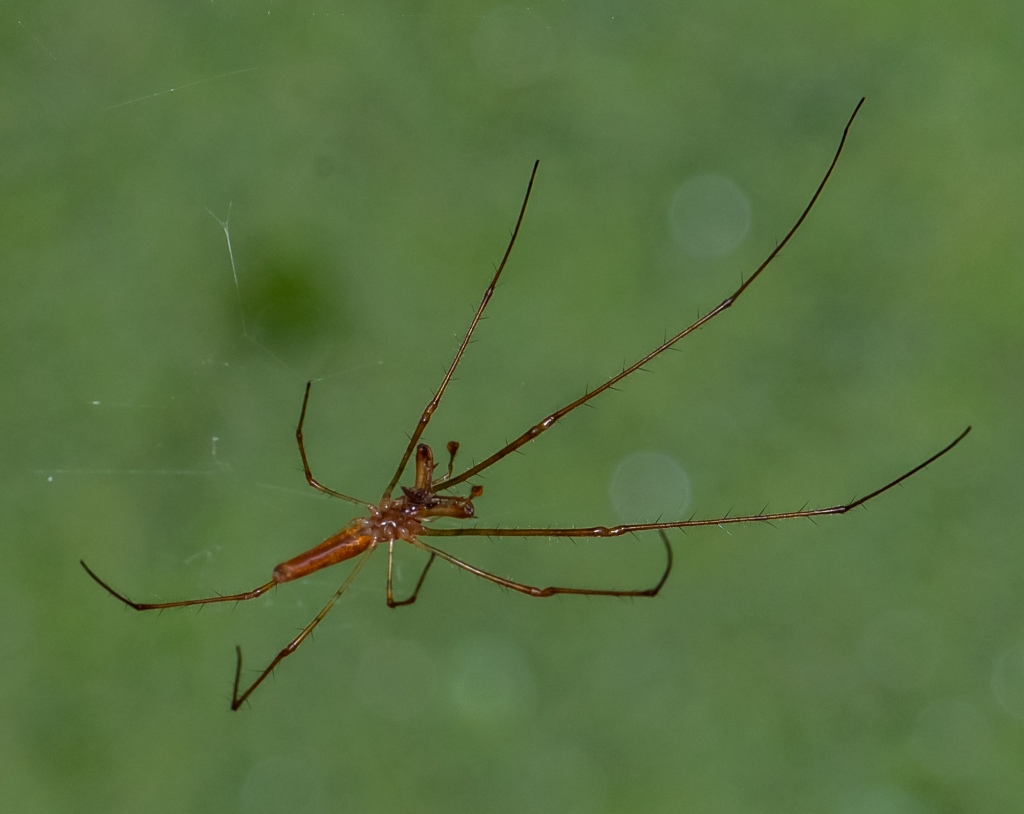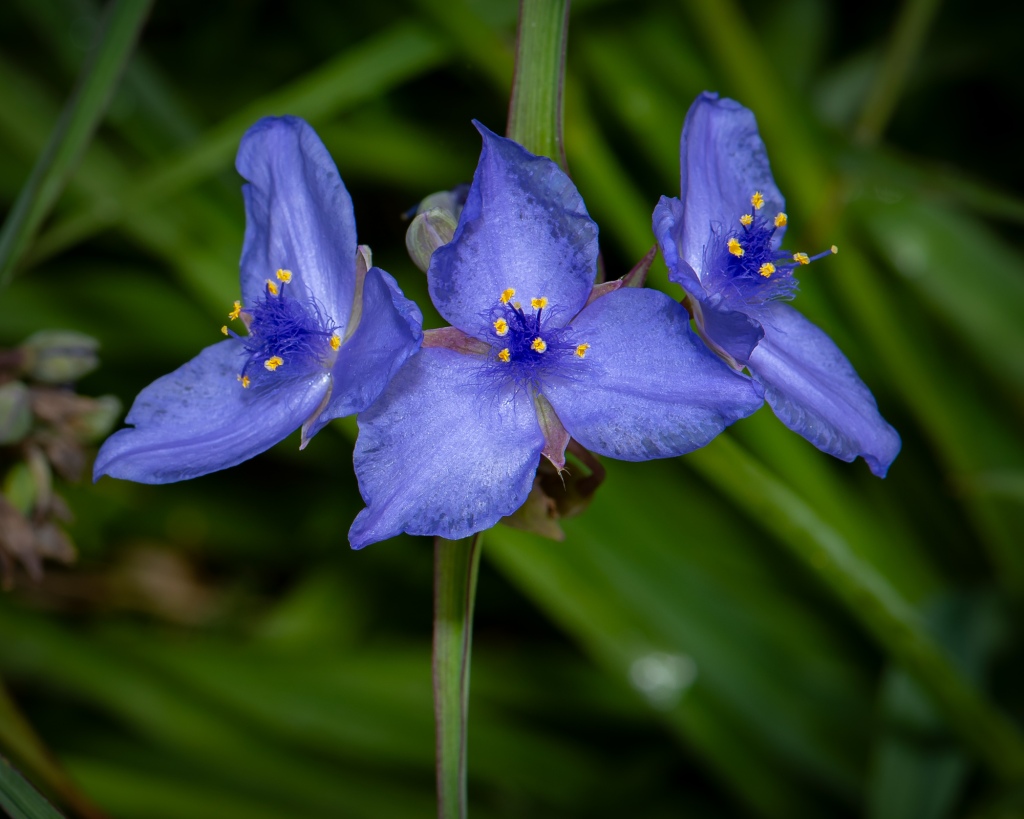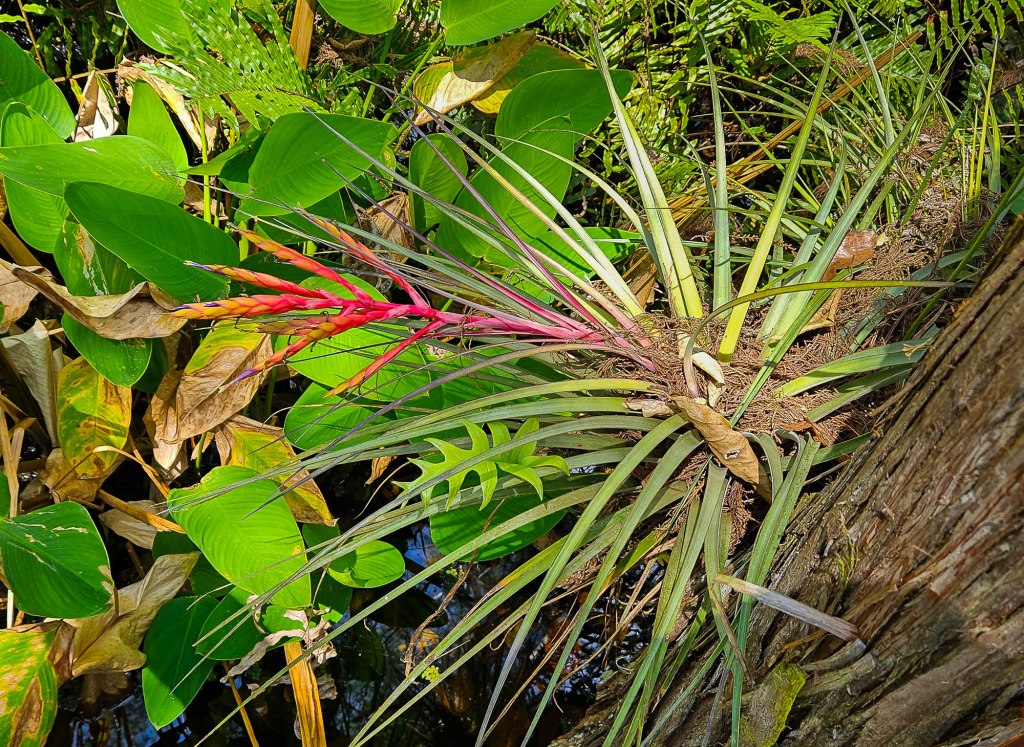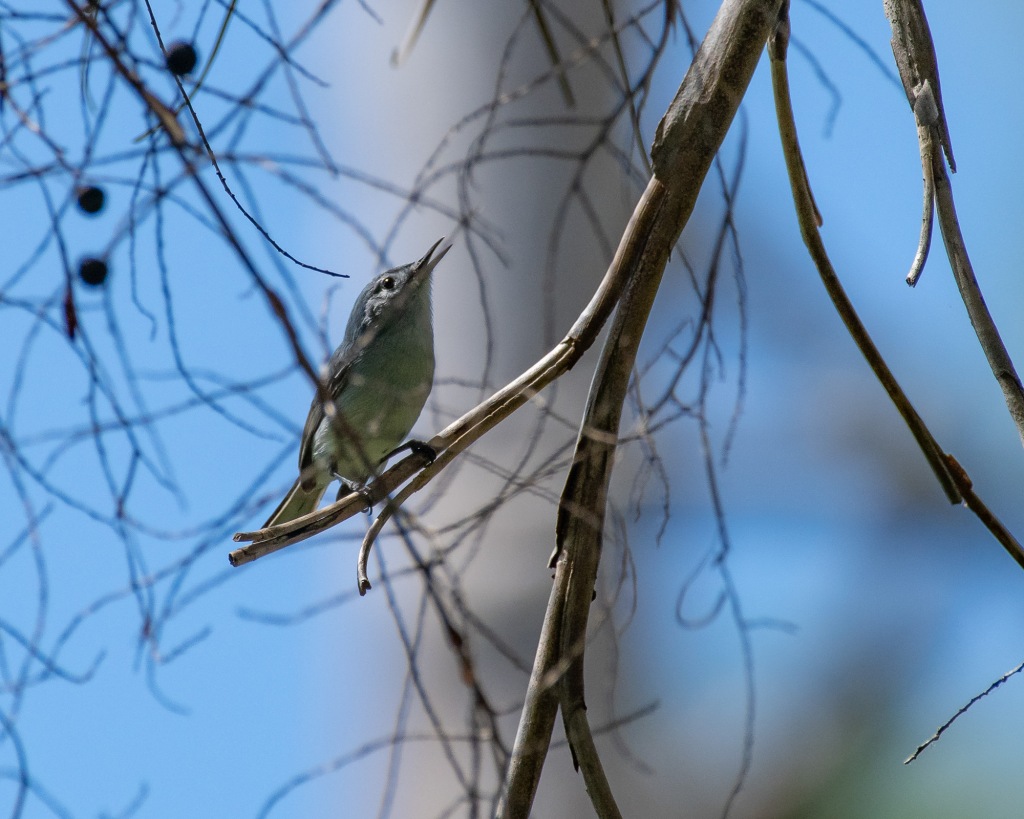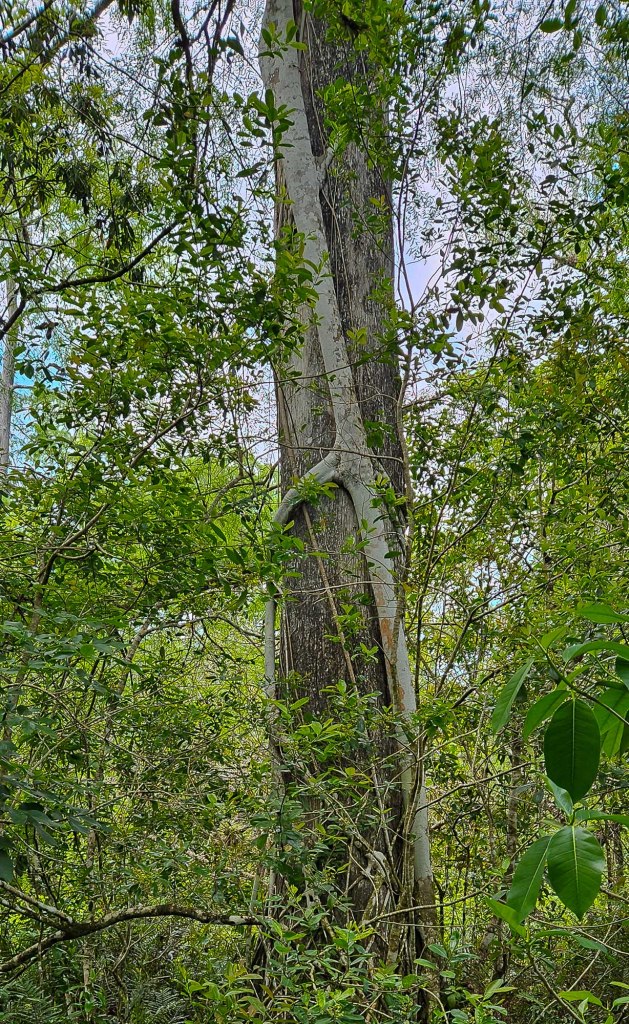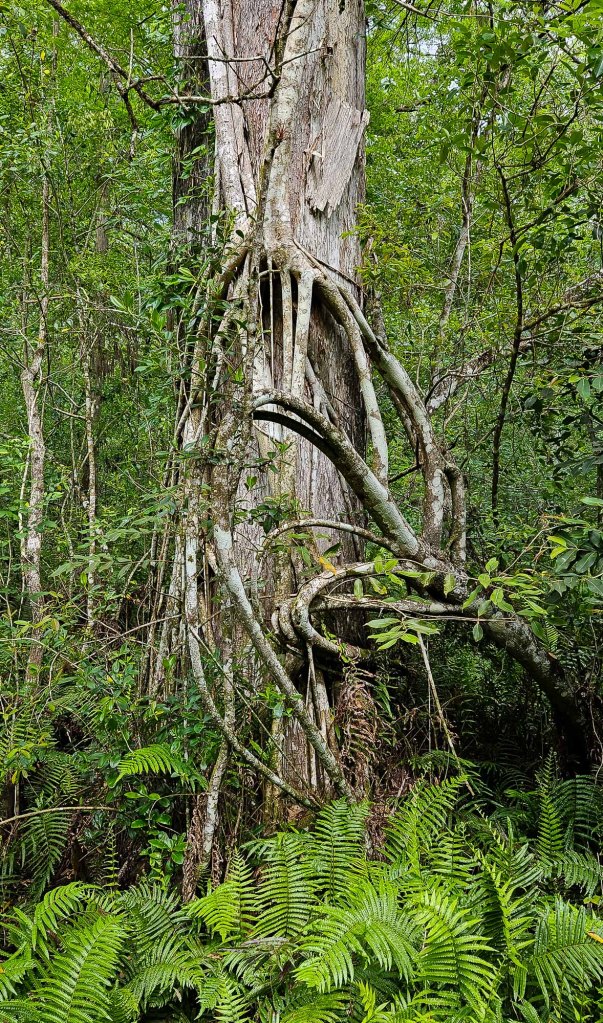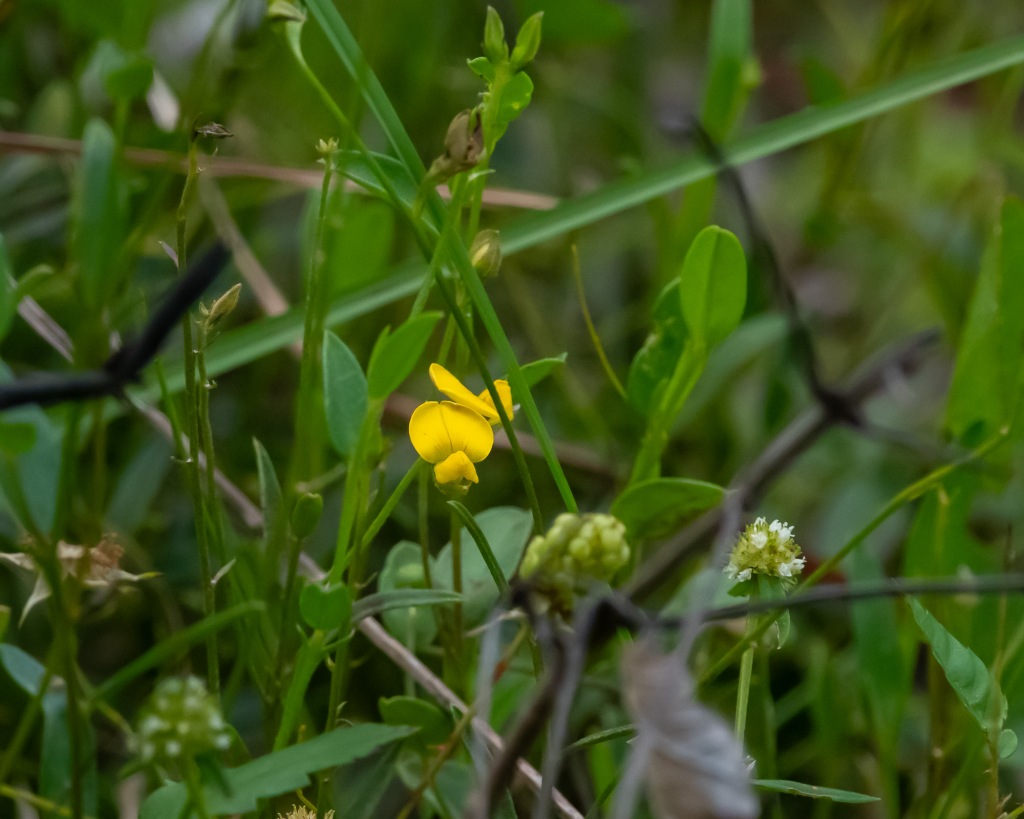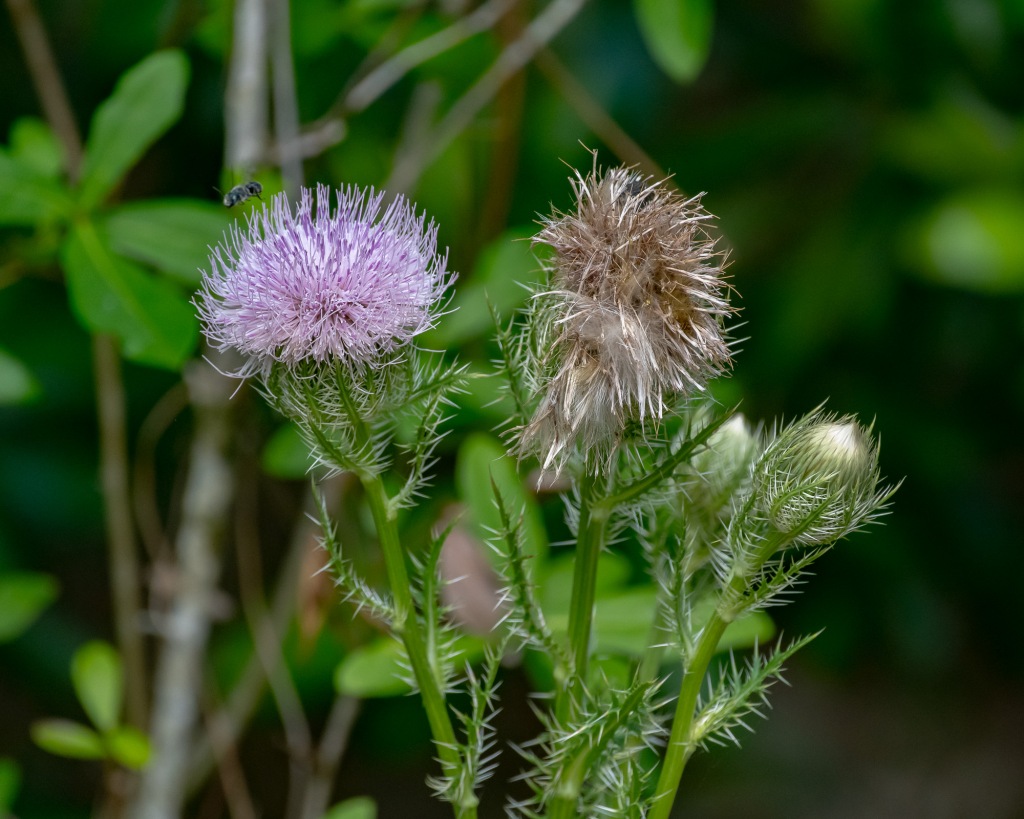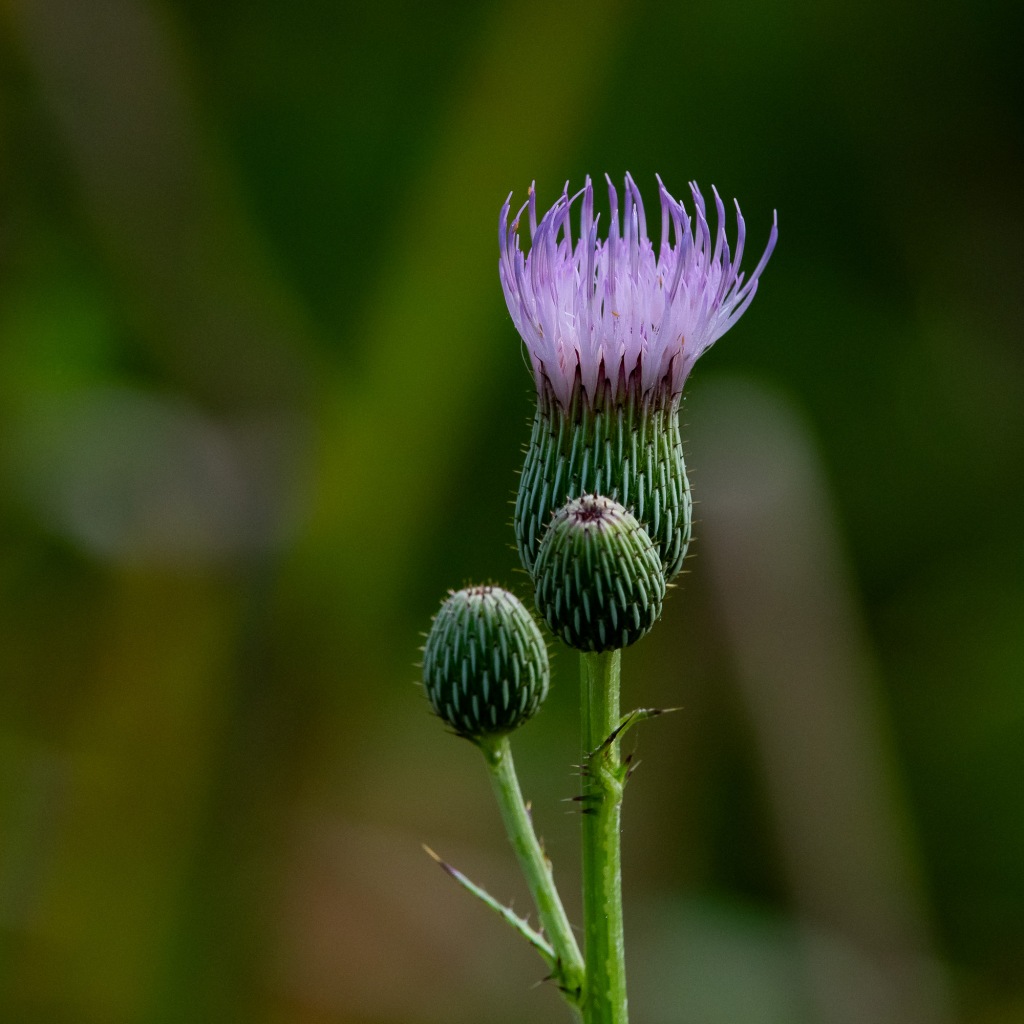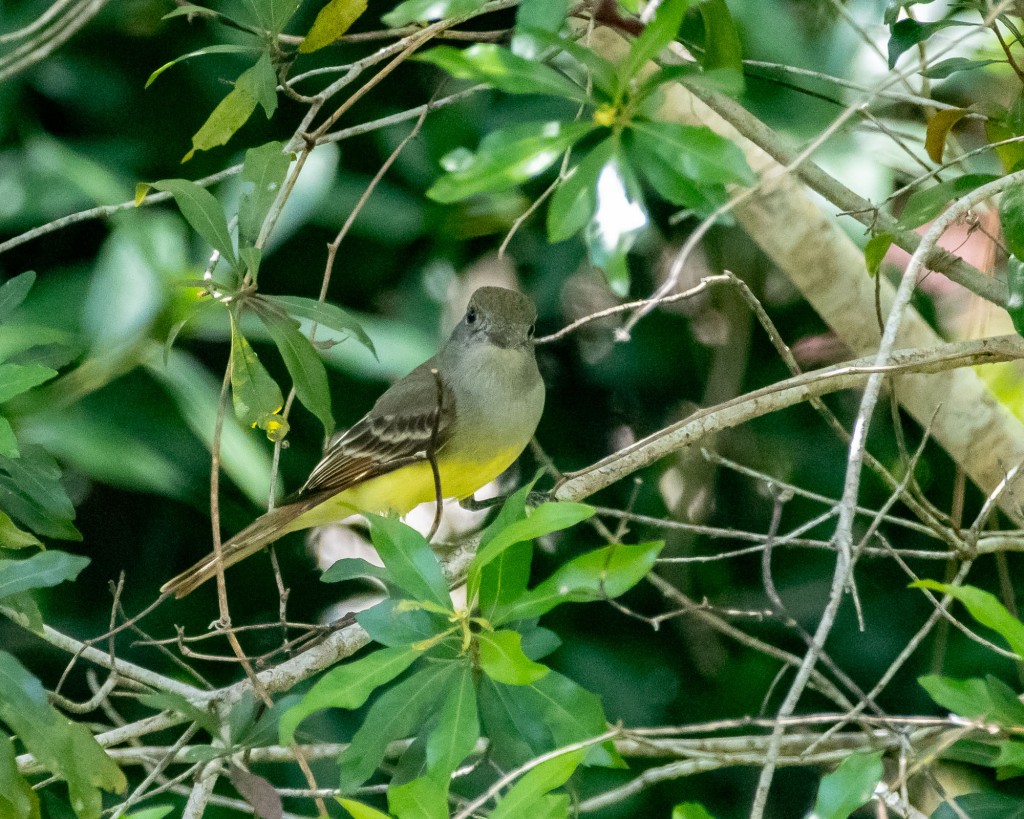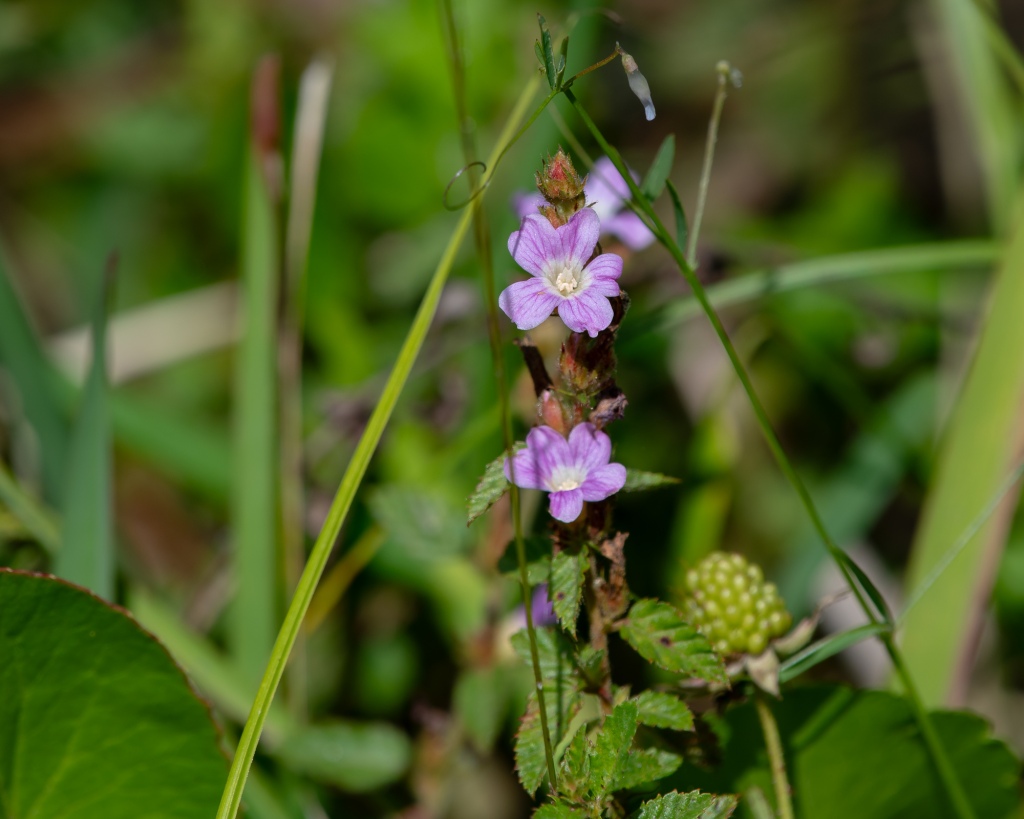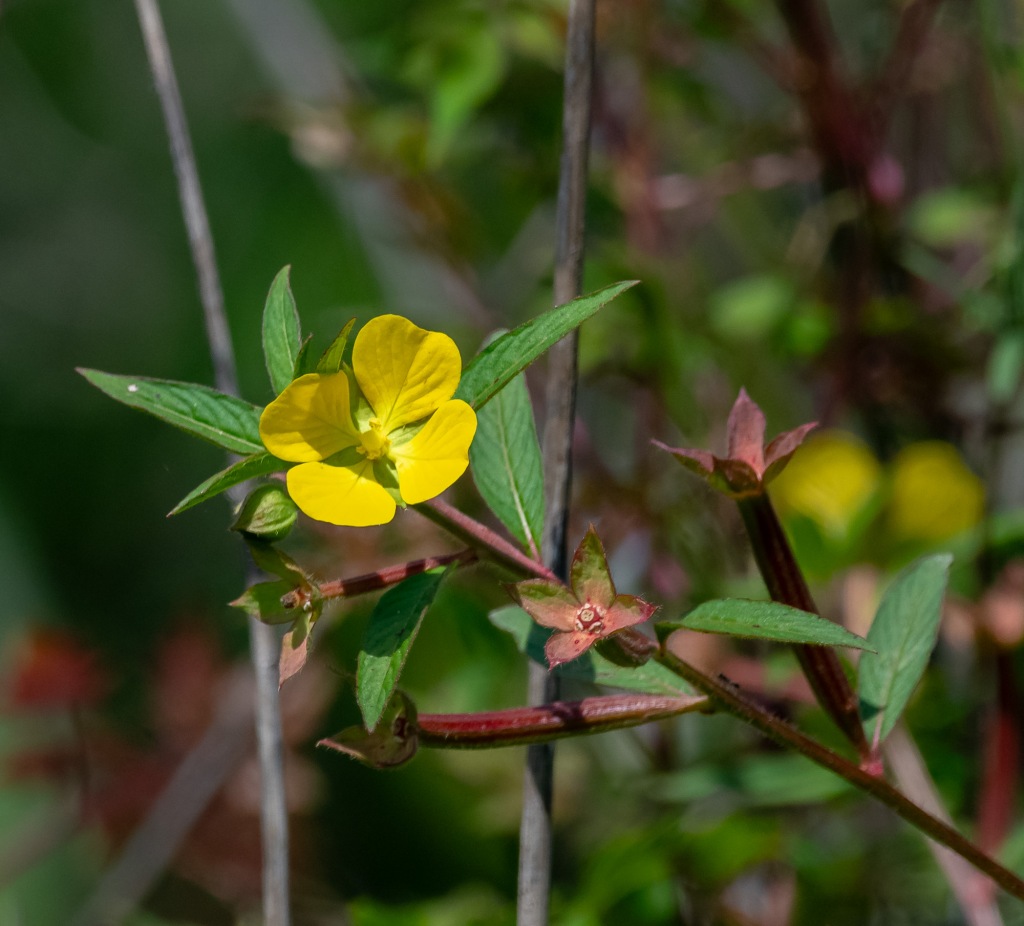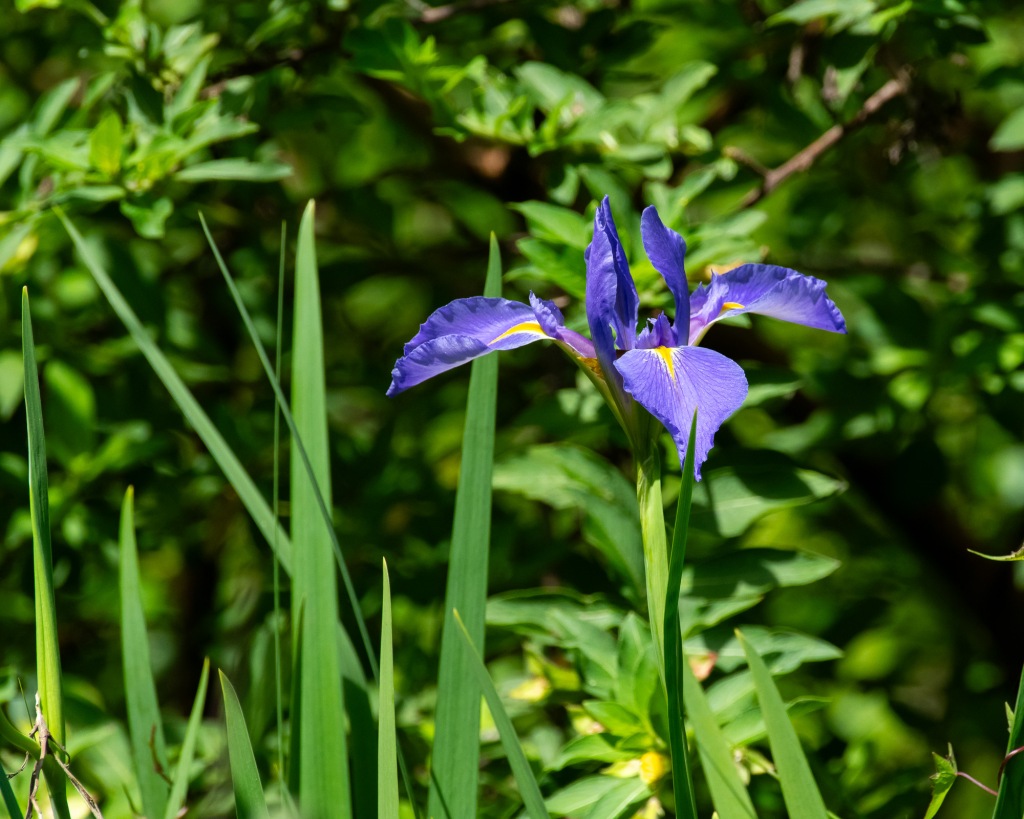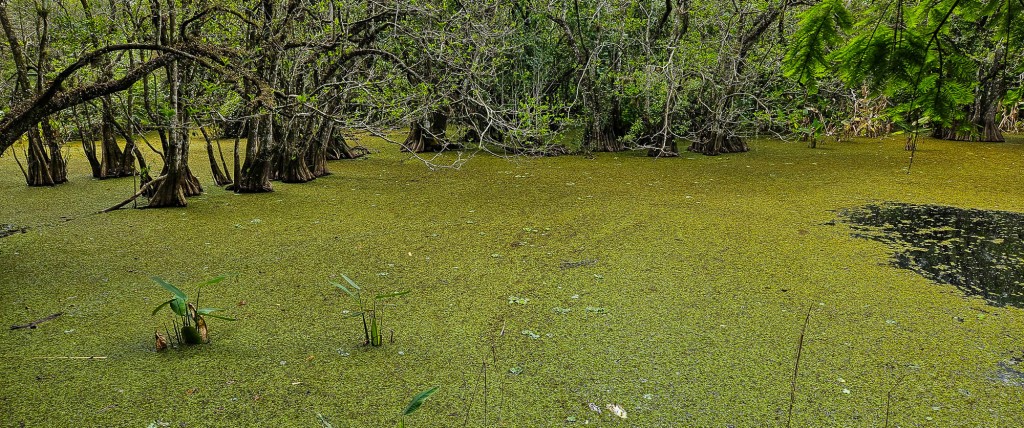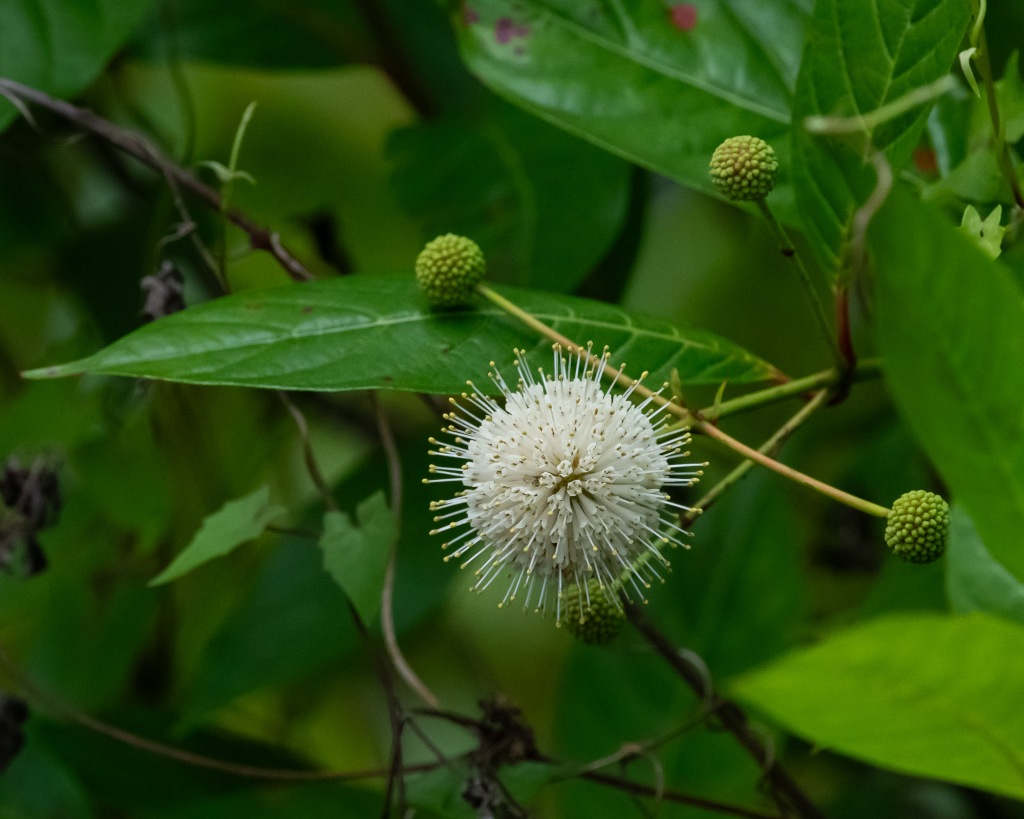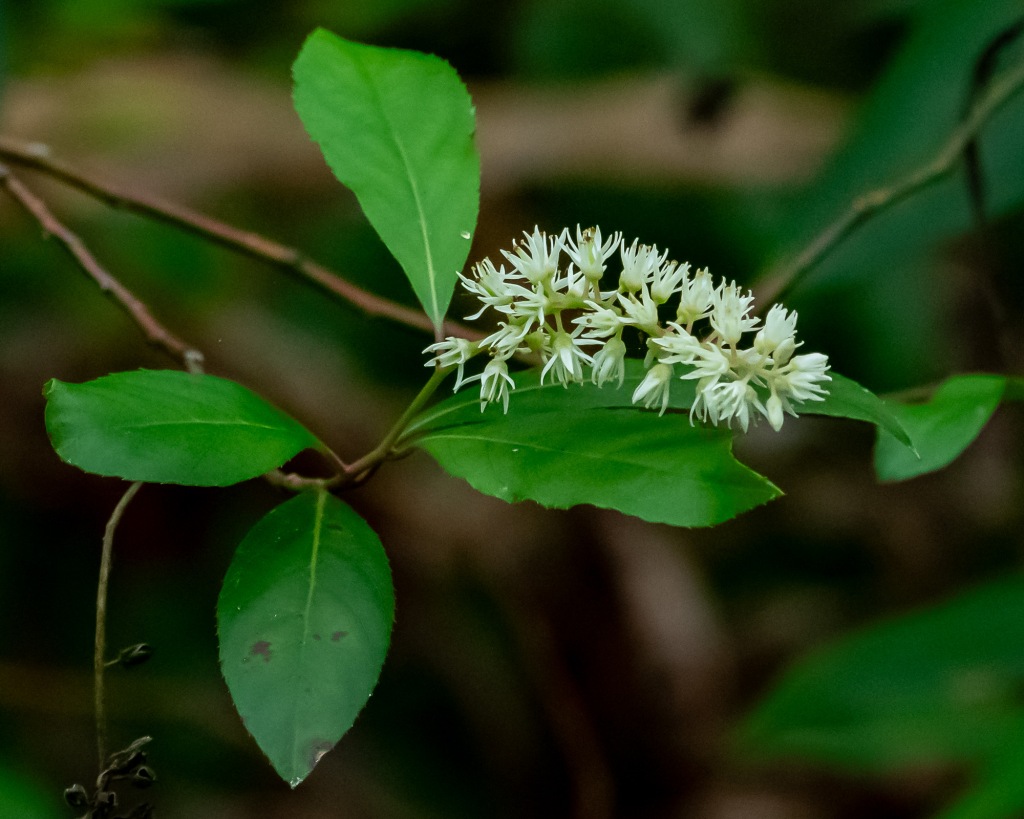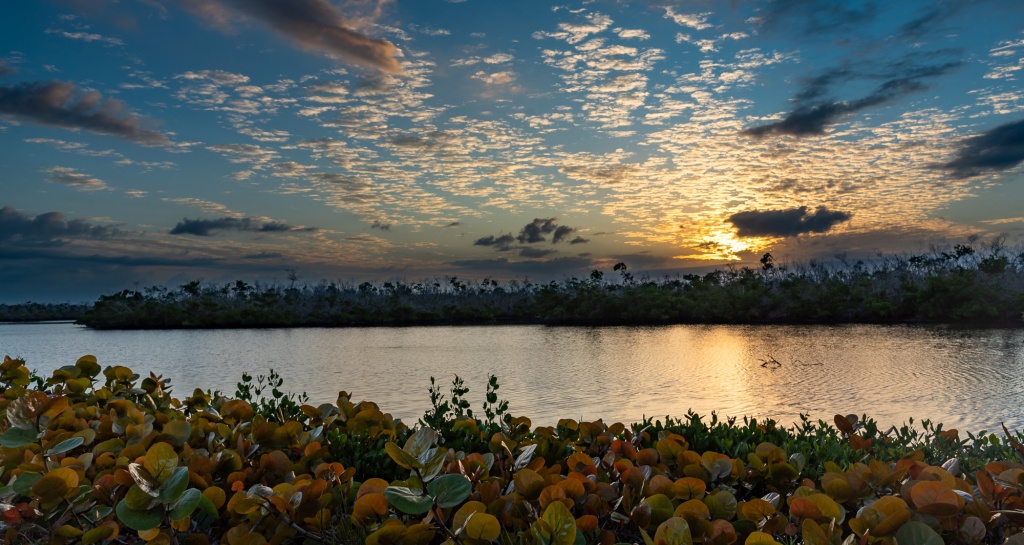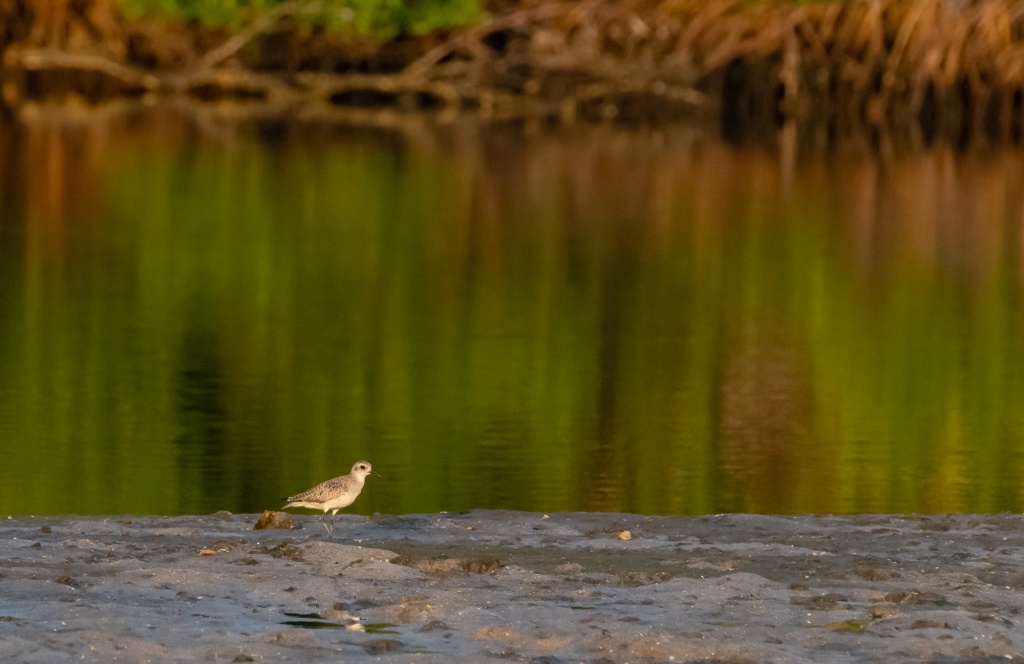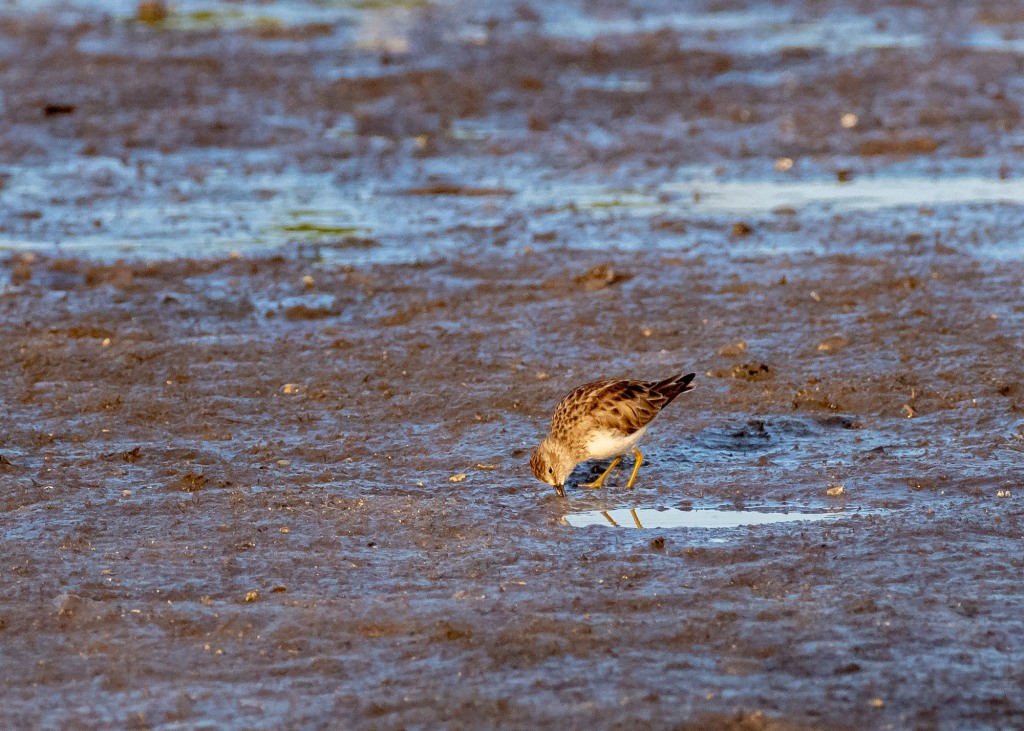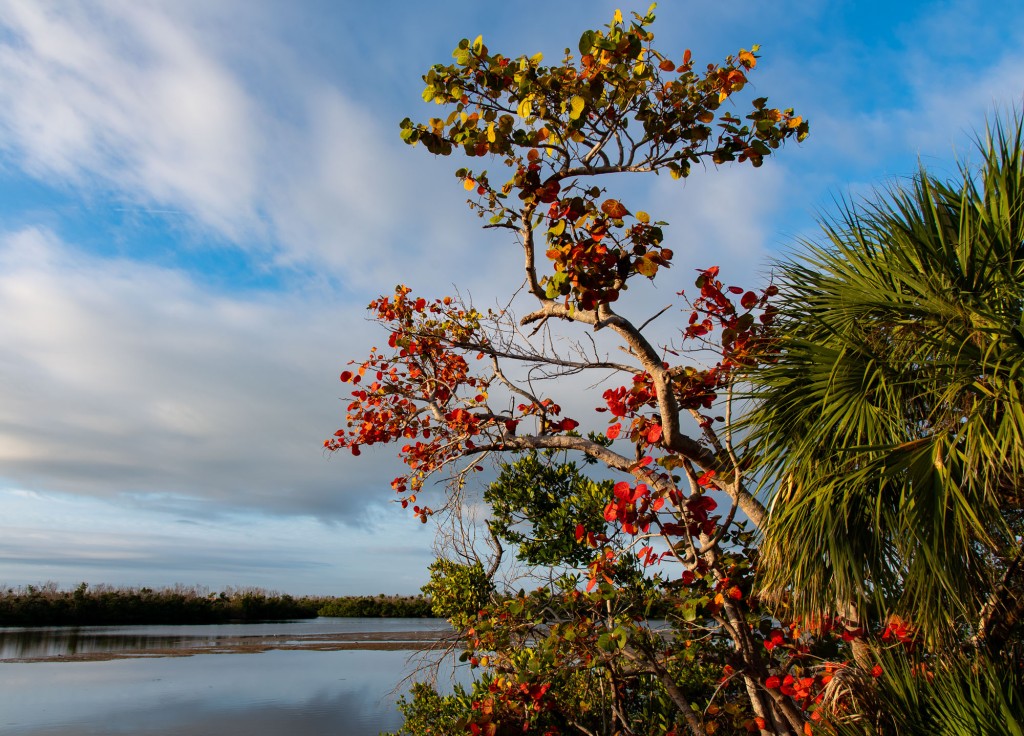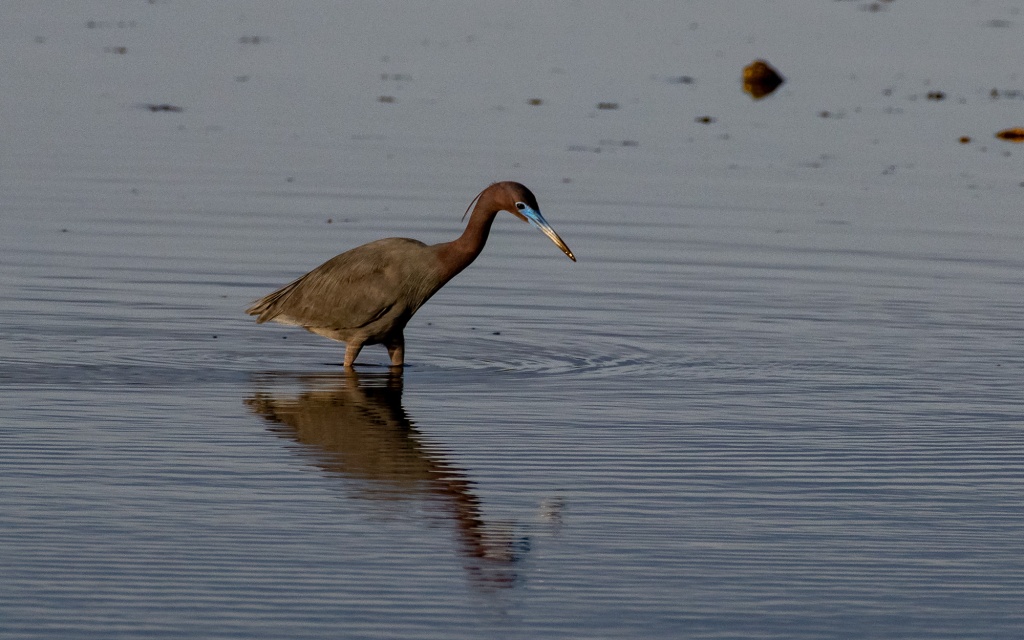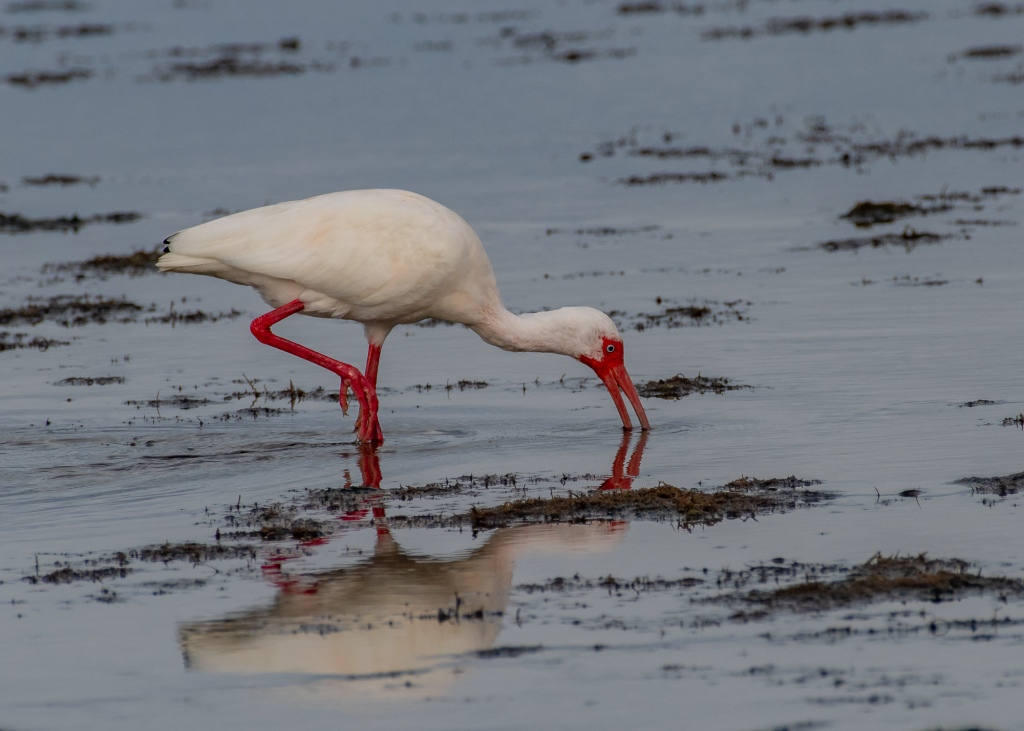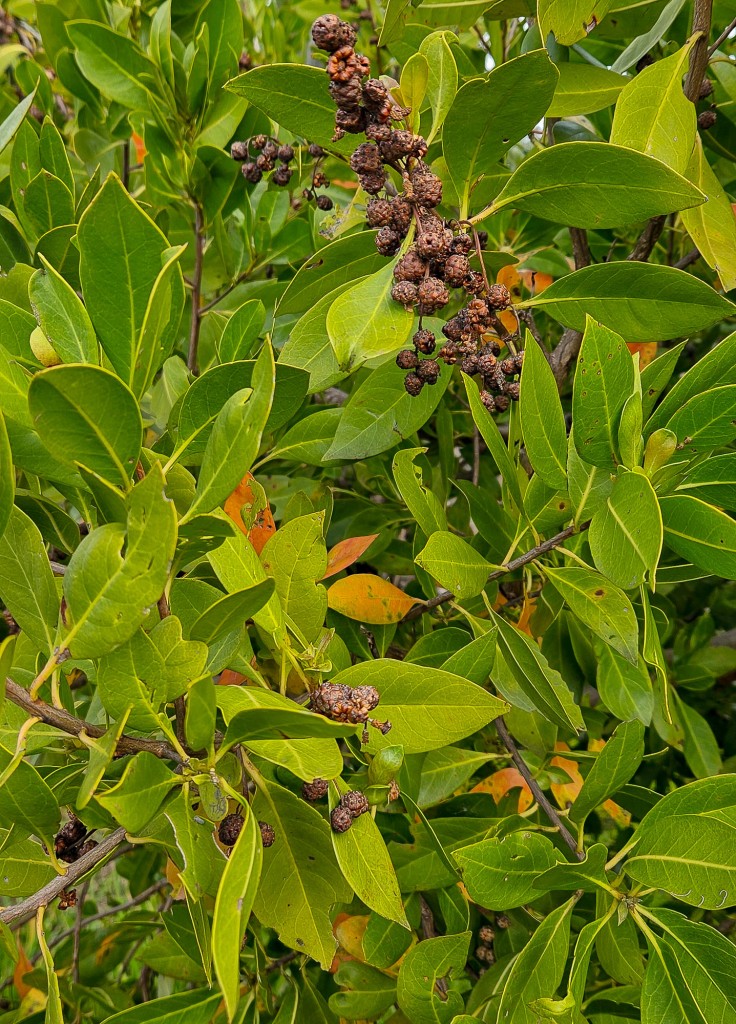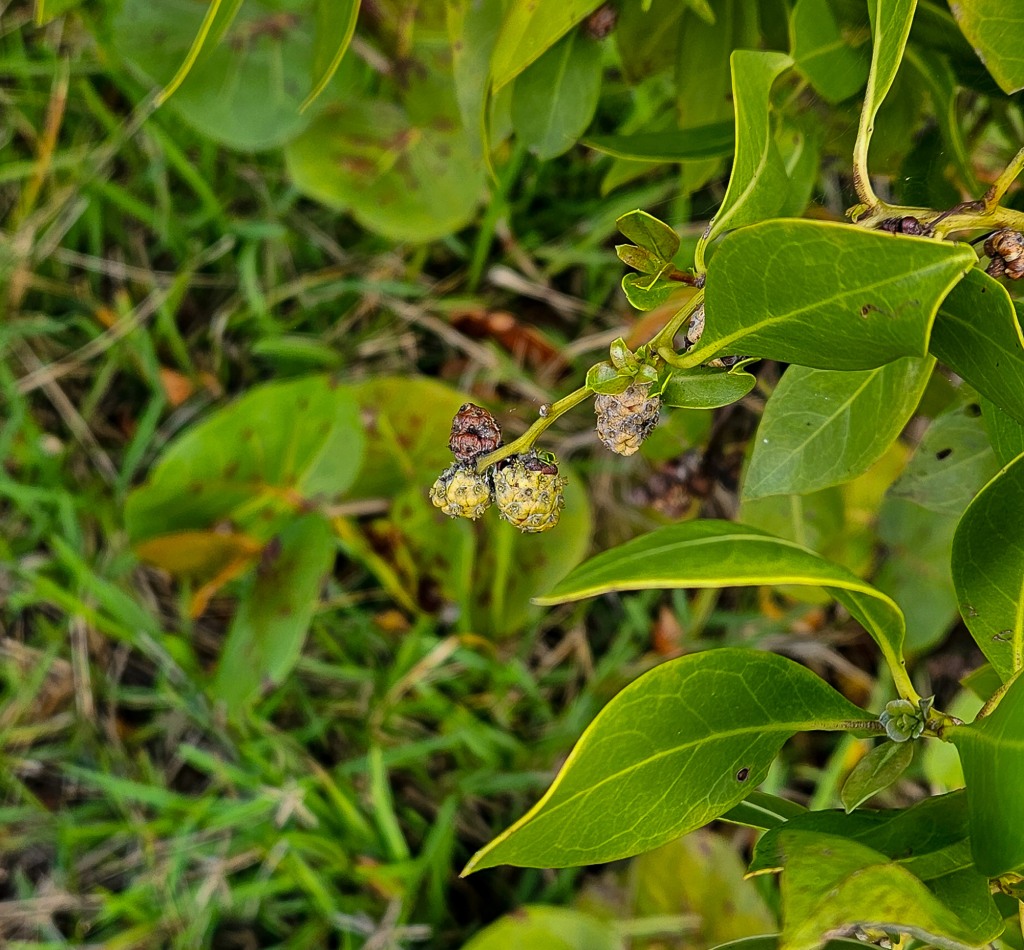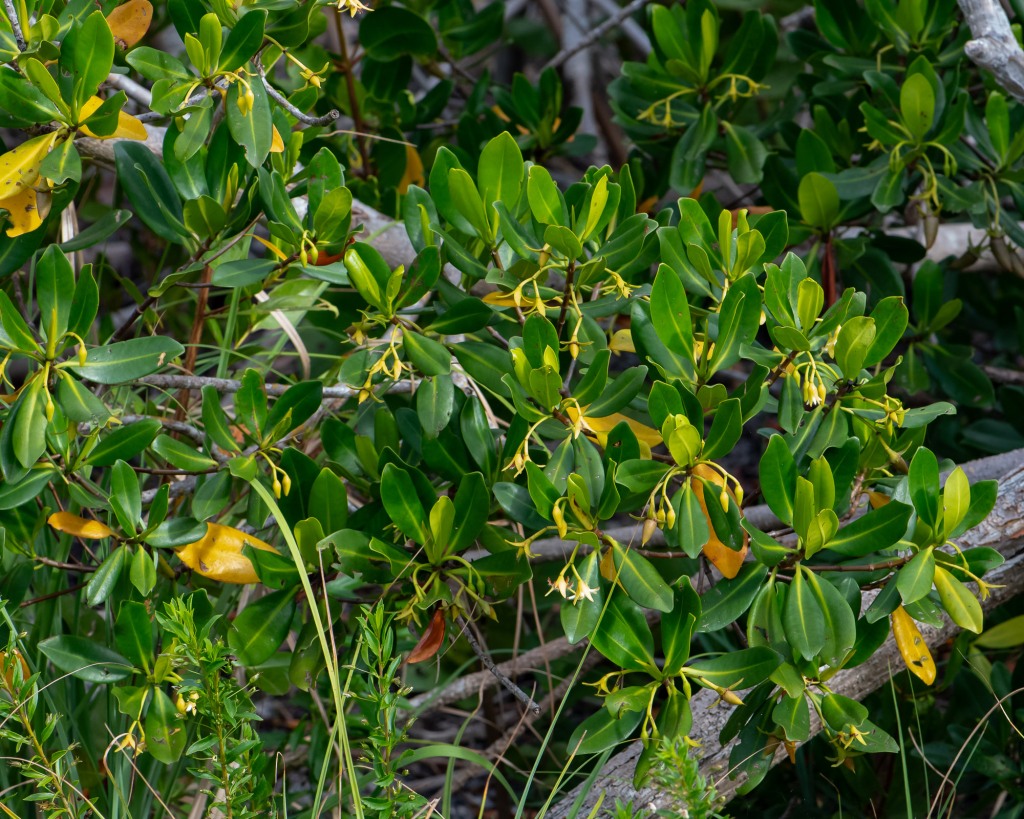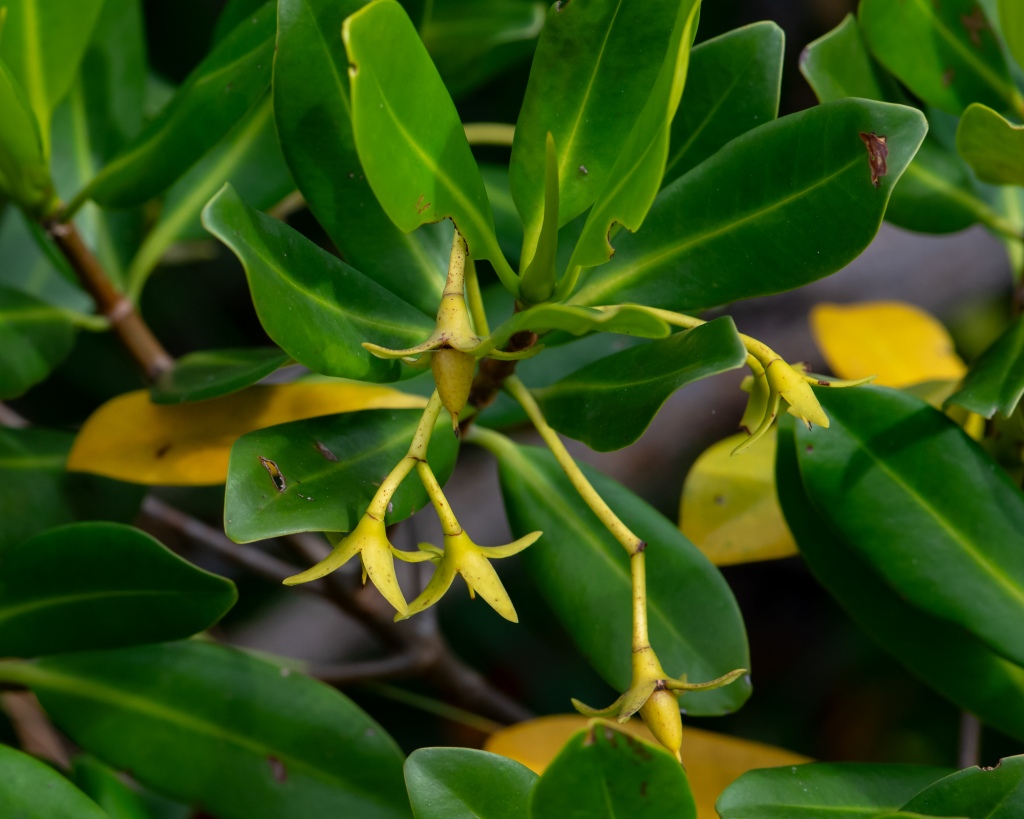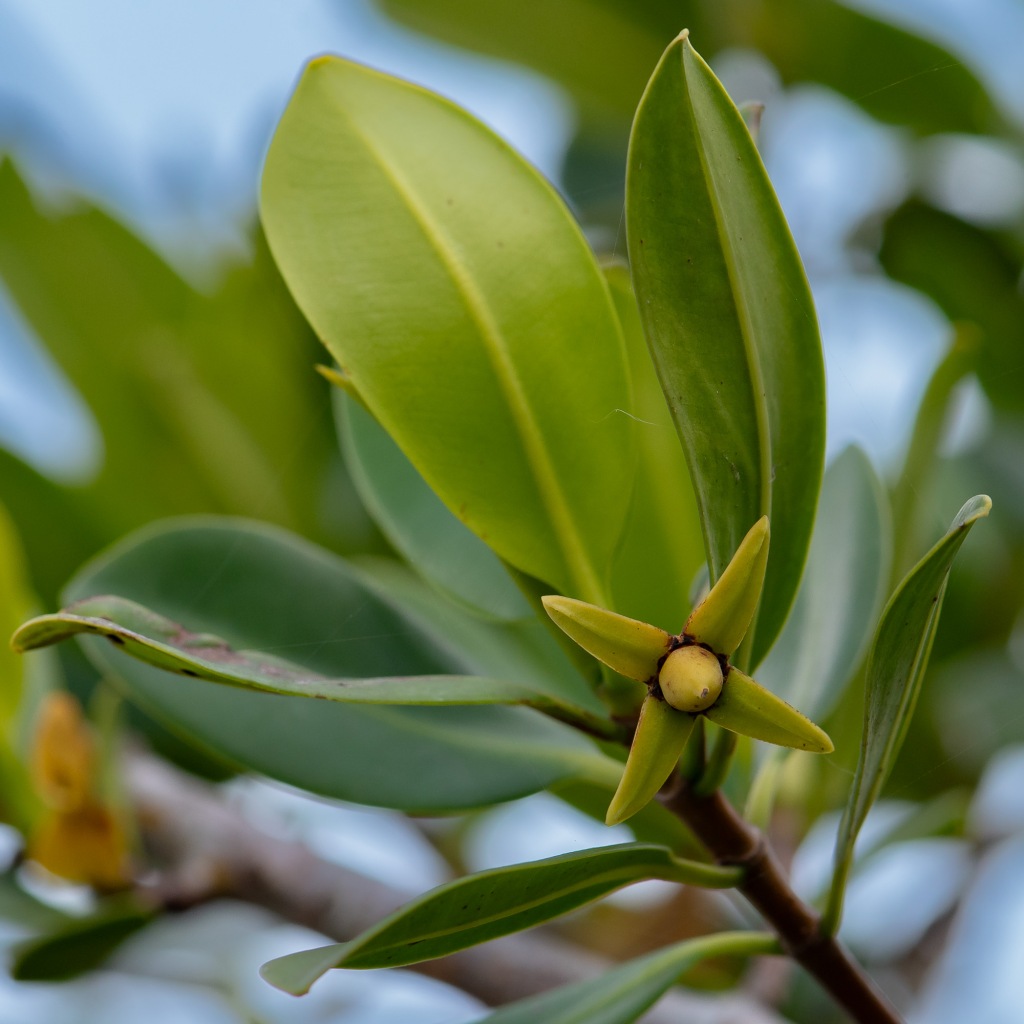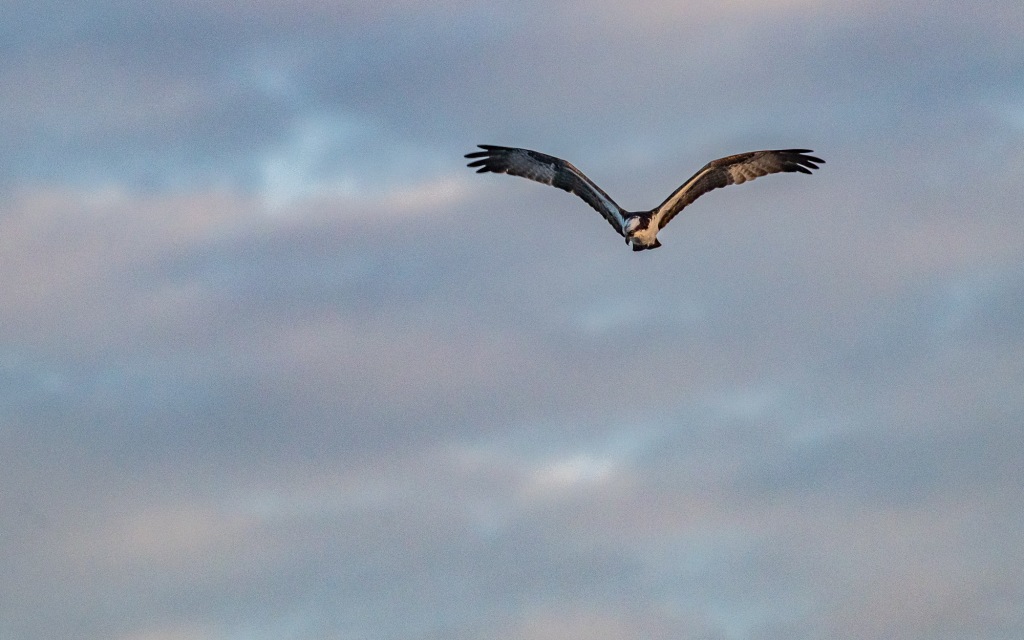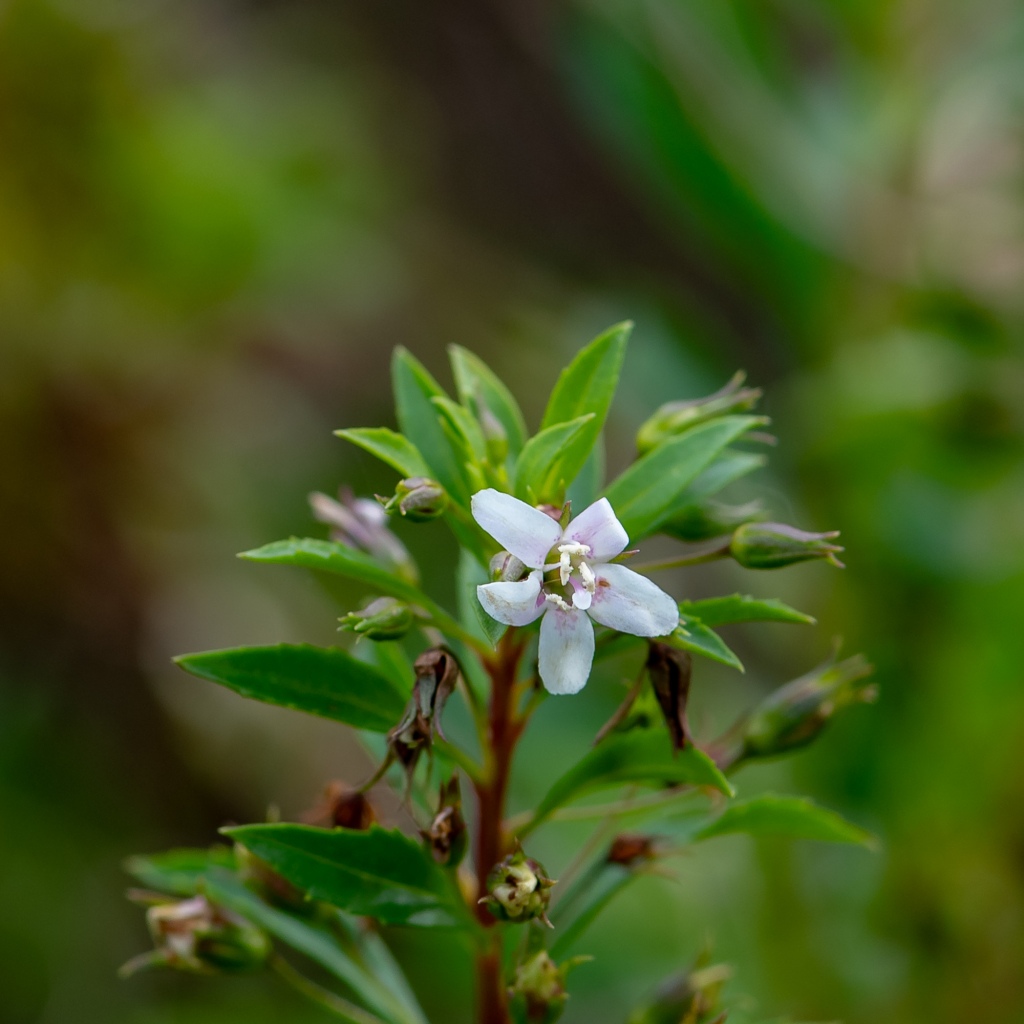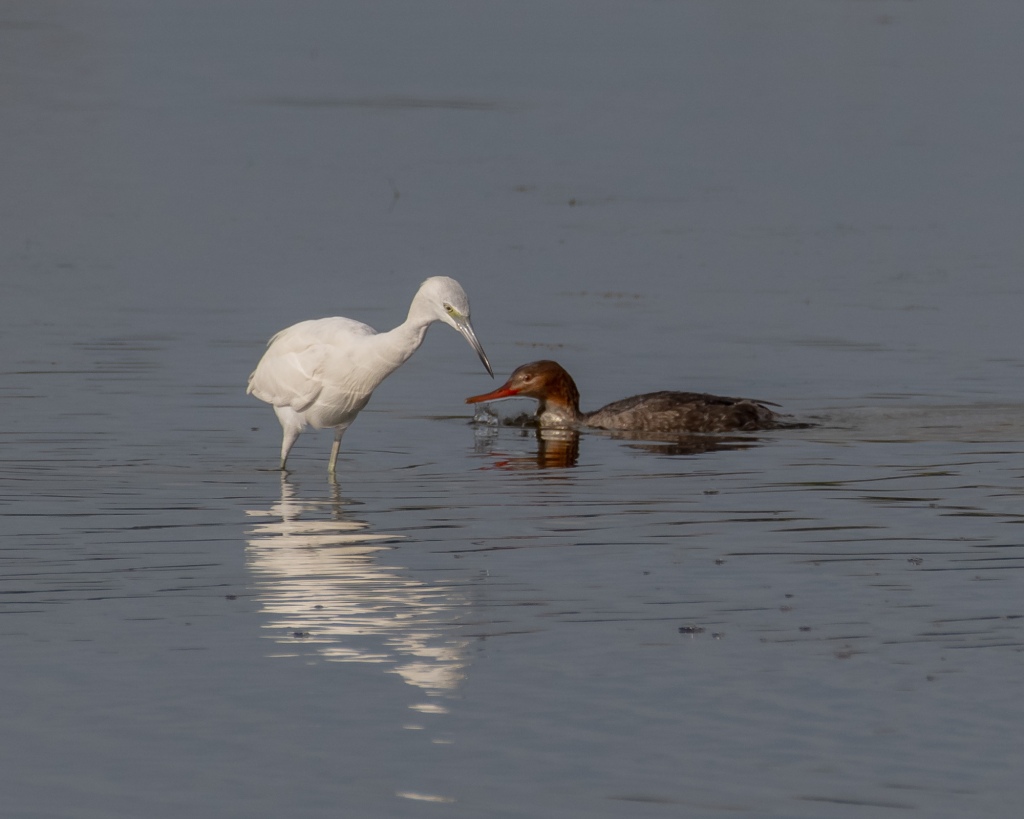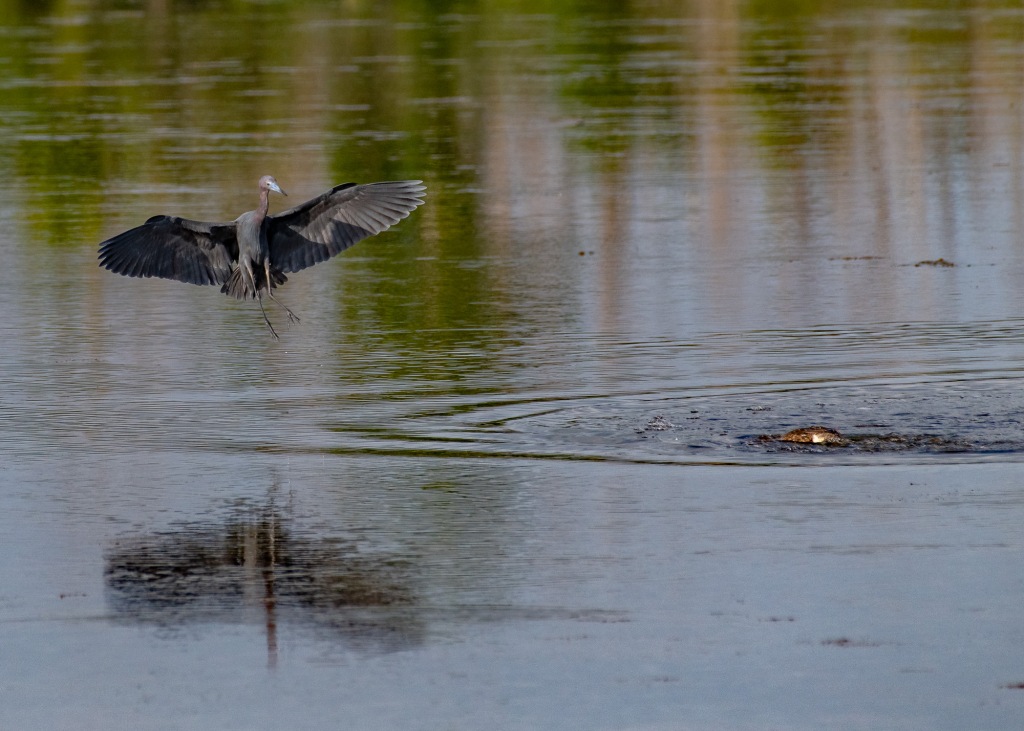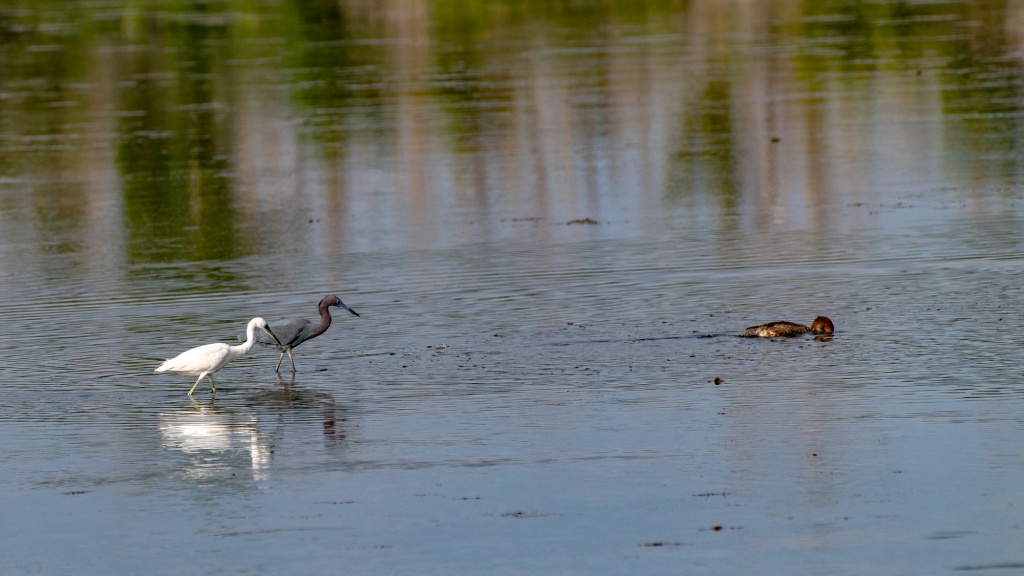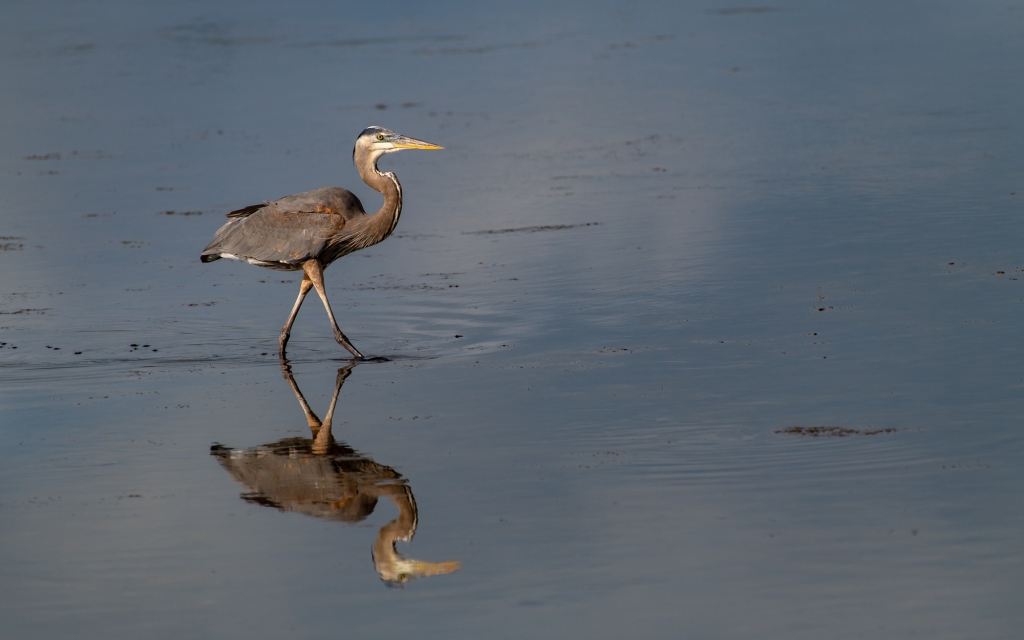
(Click on images to enlarge, click again to zoom.)
In order to enjoy sunrise at some of our favorite distant locales, the clock must be set to scream at an alarmingly early hour. Scrambling to get the gear packed, remembering to grab the food bag, did we check the gas gauge last night? We do it because we love to be in that special place at that special time when the sky begins to slowly change color. Not to mention how much we like to get up and drive two hours in the dark and — wait — scratch this last part.
Today we drove 15 minutes down the road and arrived 20 minutes before dawn. Tenoroc Fish Management Area has a reasonably pleasant spot from which we can enjoy the sun rising. It also doesn’t hurt that there are several hundred acres of woods, wetlands, lakes and fields to explore once the day begins.
Sleeping in can be a good thing.
The morning show was more colorful than some. That “Golden Hour” phenomenon provided really pleasant light for an hour or so. A “real” photographer would have gone home at that point. For us, making images is pretty much a secondary mission. Even with no camera, we would have the memory of that sunrise, the glow of a moonflower, the calls of Sandhill Cranes, the comic hunting technique of the Cattle Egret, the incredible variety of birds, blooms and bugs which Nature displays every day whether we are there or not.
Today, we were there.
At the edge of our “breakfast lake”, we munched Gini’s freshly baked strawberry bread while an Osprey flew overhead with a large branch for sprucing up the living room. An Eastern Phoebe provided us with a bittersweet reminder of her name one more time before she departs until autumn. A curious alligator watched us, submerged, surfaced in a different spot and kept up his vigilance until we left.
We saw things we have seen before. We trekked over familiar ground. Familiar aromas of blooming flowers and molding leaves filled the air. It was all – the same. It was all – different.
For some, our routine might be boring. “Okay, I saw that Tufted Titmouse, let’s go find something different.” For us, as long as the little gray bird allows us to observe, we aren’t going anywhere.
Enjoy the morning with us.
After snapping a few images of the morning sky, I turned around to discover two large bushes covered in blooms. The Moonflowers (Ipomoea alba) were illuminated by the sun’s rays and the big morning glory blossoms seemed even more incredible than usual.

In addition to the phoebe mentioned earlier, another winter visitor preparing to leave us soon, a Savannah Sparrow, was part of a flock of about a dozen. Seeds and insects will provide them with the fuel they need for their long journey.

The early morning sky was not yet bright enough to cause the Cutleaf Evening Primrose (Oenothera laciniata) to fold its pretty petals. We appreciated the delay.

Fruits of the Netted Pawpaw (Asimina reticulata) will soon appear and just as they ripen, will quickly disappear. Wildlife enjoy these small fruits, sometimes called “custard apples”, and you’ll have to be quick to find them. “Netted” refers to the appearance of the leaves.


Trumpeting of a pair of Sandhill Cranes grew louder and they eventually landed in a nearby field. Although several thousand migratory cranes visit Florida each year, these are likely a resident sub-species which breed in the state.


We have entered the season of dragons and damsels, most not in distress. This handsome male Rambur’s Forktail (Ischnura ramburii) allowed me to lay down and take several candid photos. He was kind enough to order a set of 8×10 glossies of that second image for friends and family.


Cattle Egrets sometimes appear to be double-jointed as they lurch left and right to snag a grasshopper. Gini says the soft brown on the breast reminds her of campfire marshmallows. As for me – their gait brings this instantly to mind every time: https://www.youtube.com/watch?v=Cv6tuzHUuuk. (Sorry about the earworm.)


Eastern Phoebe. We will miss you. Hurry back.

Sometimes appearing as a medium-sized shrub, Walter’s Viburnum (Viburnum obovatum) can attain a height of more than 20 feet and has the appearance of a full-sized tree. The blooms are profuse and have a wonderfully sweet aroma.

Were we watching this Tufted Titmouse or was it watching us?

I followed the Osprey carrying a big stick to its building site where he and the Missus made it known how much they appreciated my photographic efforts. I’m pretty sure I heard Osprey cursing.


We may not have traveled very far to enjoy a sunrise, but the incredible beauty of the event caused us to pause, sigh and agree that we continue to be among the most fortunate beings in the universe. The remainder of our Morning Ramble underscored that feeling.
Enjoy your search for a natural place and come back for a visit!
Additional Information
Tenoroc Fish Management Area (https://myfwc.com/recreation/lead/tenoroc)
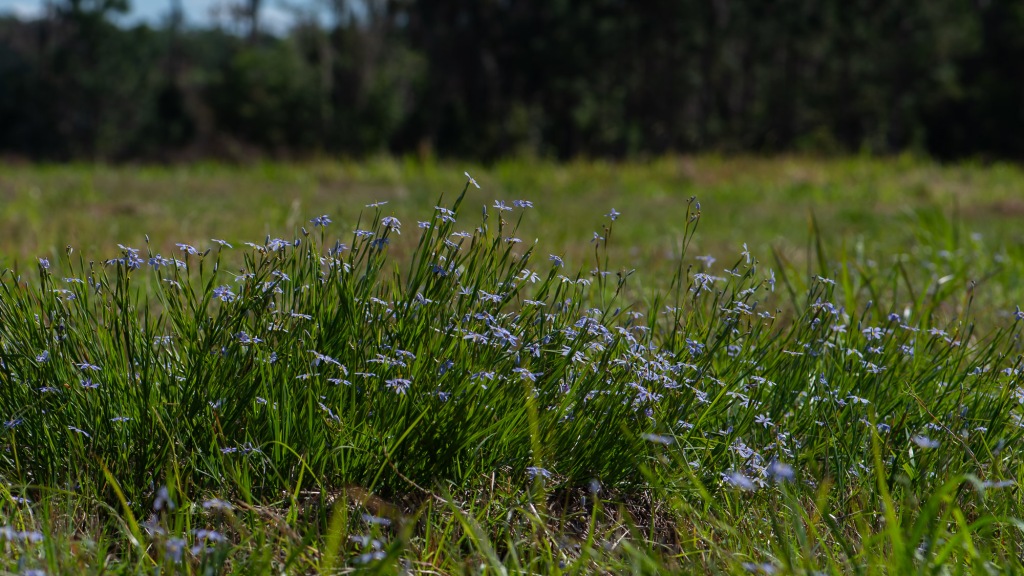
(Click on images to enlarge, click again to zoom.)
Here we are again. We don’t exactly know each tree by their name, but we know we are among friends. The arching branches provide shade for our late morning breakfast. A breeze by itself makes no sound, but when it rustles pine needles above our heads it gives the impression of waves breaking along the shore of our souls.
No matter how ingenious humans become, reproducing the aroma of a pine forest for our living room, the laundry, a car, the bathroom (!) is just not possible. When you are in an actual forest, aroma is only one of a complex set of sensations combining to create an experience. Pine scent is just fine where it is, thank you very much.
On this bright Spring day, Gini and I wandered slowly and re-discovered the miracles of this season of renewal and growth. How amazing that “green” can come in so many different subtle shades! Green is highlighted by a nearly infinite array of additional colors as buds, leaves, flowers, fruits and canopies decorate the landscape.
Blooming flora means a fresh supply of food for insects, birds and animals of the fields and woods. It is one thing to enjoy the beauty of a flower, but when one looks closer we discover a nectar-gatherer who will visit another bloom, carrying with it the life-continuing pollen necessary for a plant’s survival. In the distance is another flower being attended by another would-be pollinator but the busy bug is snapped up by a Great Crested Flycatcher. The Circle of Life is non-discriminatory and it is quick.
Our exploration lasted for a morning. Our memories will remain forever.
One day, I shall stop apologizing for including so many images in these posts. Simply scroll quickly and perhaps linger if you find something agreeable.
Dozens of Prairie or Savanna Iris (Iris savannarum) were on display today. Just one example shows why we love this flower.
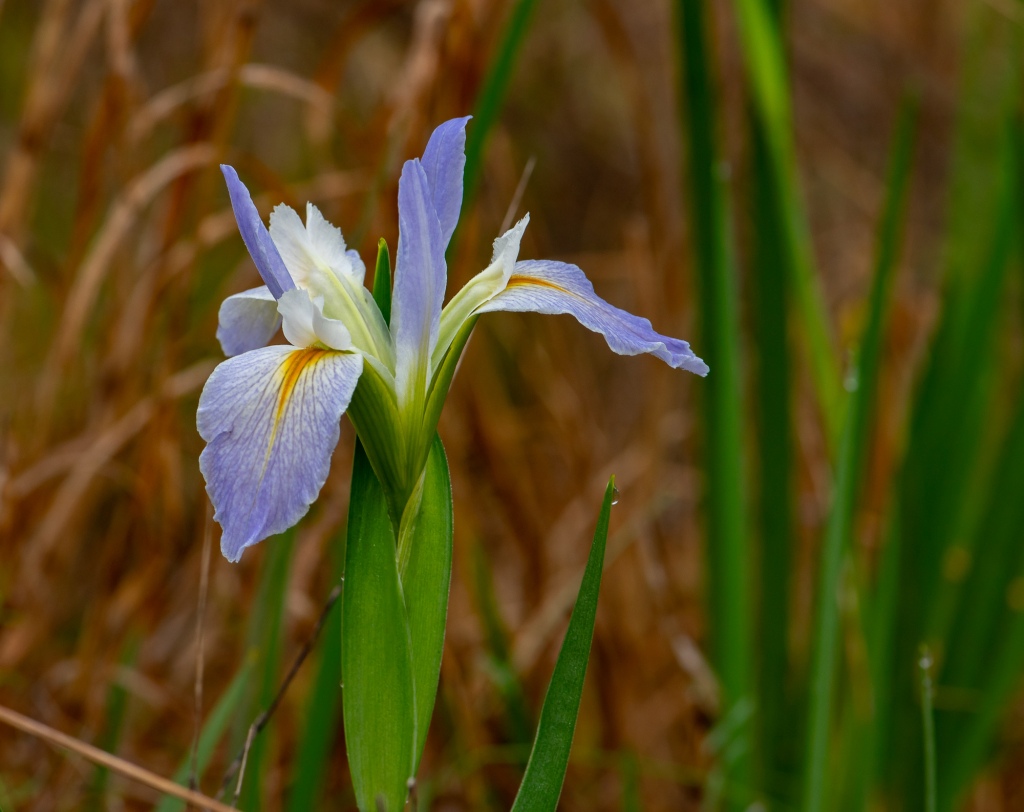
A shy Common Ground Dove peeks at us from her perch in a holly tree.
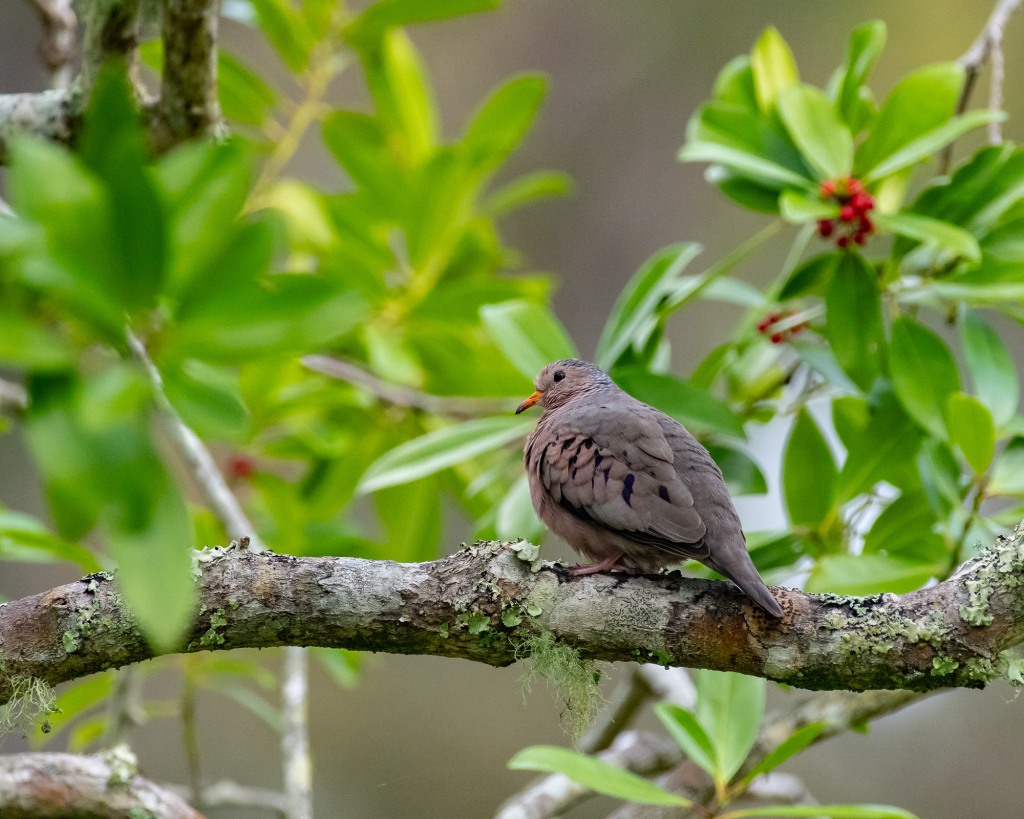
While admiring the lovely blooms of a Nuttall’s Thistle (Cirsium nuttallii), we were being admired by a lovely Eastern Leaf-footed Bug (Leptoglossus phyllopus).

Lingering in the Sunshine State can be a good thing. Unless you need to be in Virginia checking your dating service and real estate listings for suitable nest sites. We forgive this Savannah Sparrow for procrastinating and will look forward to seeing him again in the fall.

Roads are for racing. This North American Racer (Coluber constrictor) knows that. Fortunately, 1/1250th of a second was enough to capture an image before it disappeared into the grass.

Another Spring-breaker who needs to get its rump up north. We are already noticing a lot fewer Yellow-rumped Warblers than just a week ago.

One of my all-time favorite flowers. Perhaps it’s the incongruity of its common name with its actual species. Nah, the Carolina Desert-chicory (Pyrrhopappus carolinianus) is just plain beautiful.
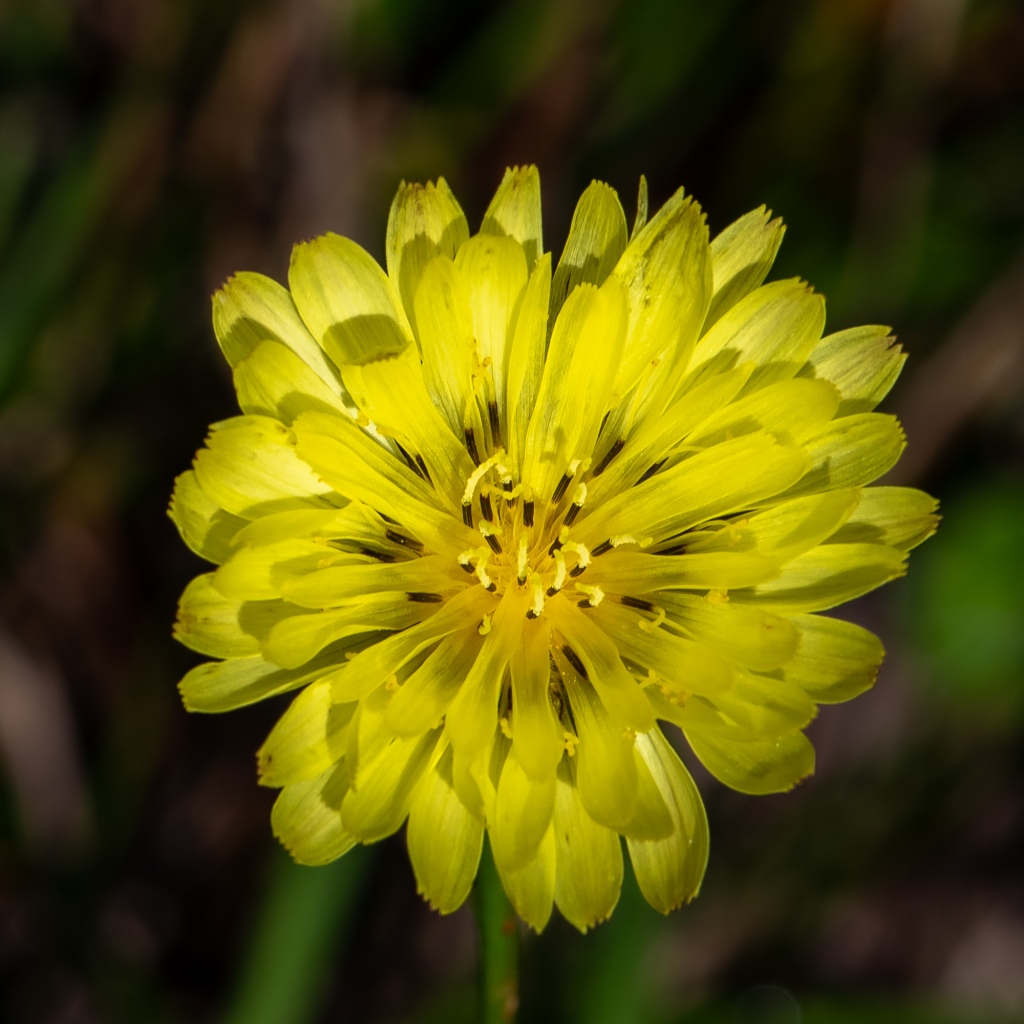
This Blue-gray Gnatcatcher is likely a resident rather than migrant. The northern visitors usually travel in groups and this one was all alone while it scooped up bugs among the branches.

When you are small enough, the spines of the thistle are not much of a problem. This Spotless Lady Beetle (Cycloneda sanguinea) has no issues with navigating among the pointy things.
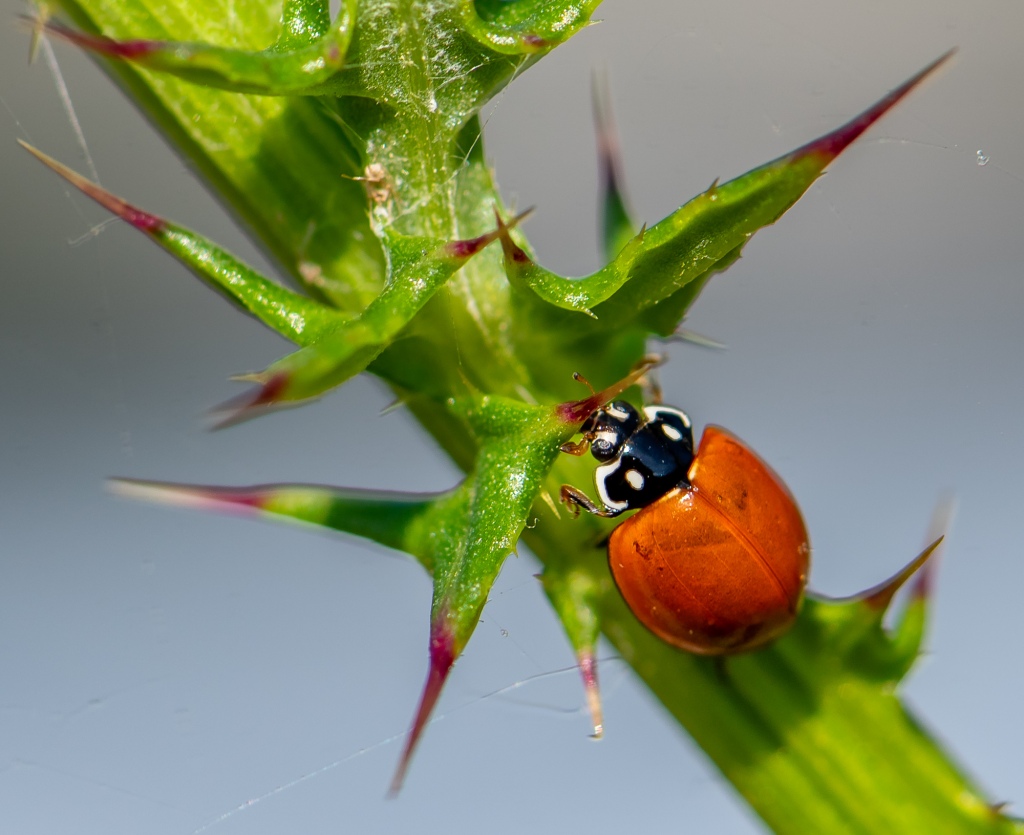
This lovely flower is new to us. Sparse blooms on a spindly stem over three feet tall, a Bahaman Aster (Symphyotrichum bahamense) really stood out against the backdrop of the pine forest and palmetto understory.
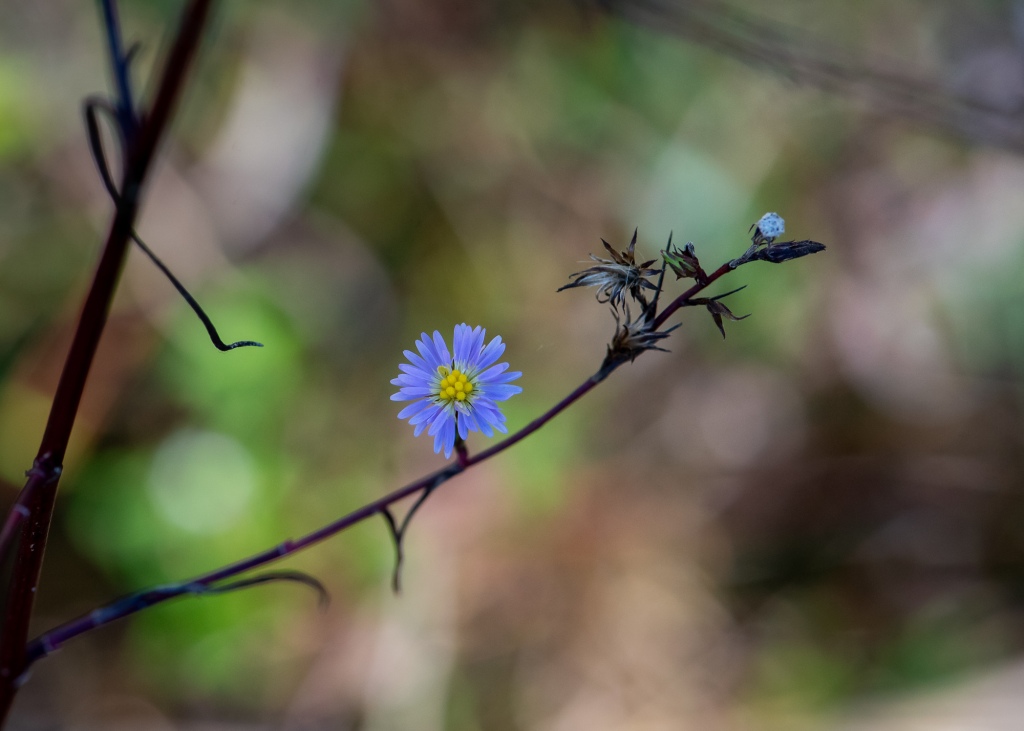
Another favorite threw itself in front of us and begged to be photographed. Several patches of Blue-eyed Grass (Sisyrinchium angustifolium) kept us entertained for awhile.
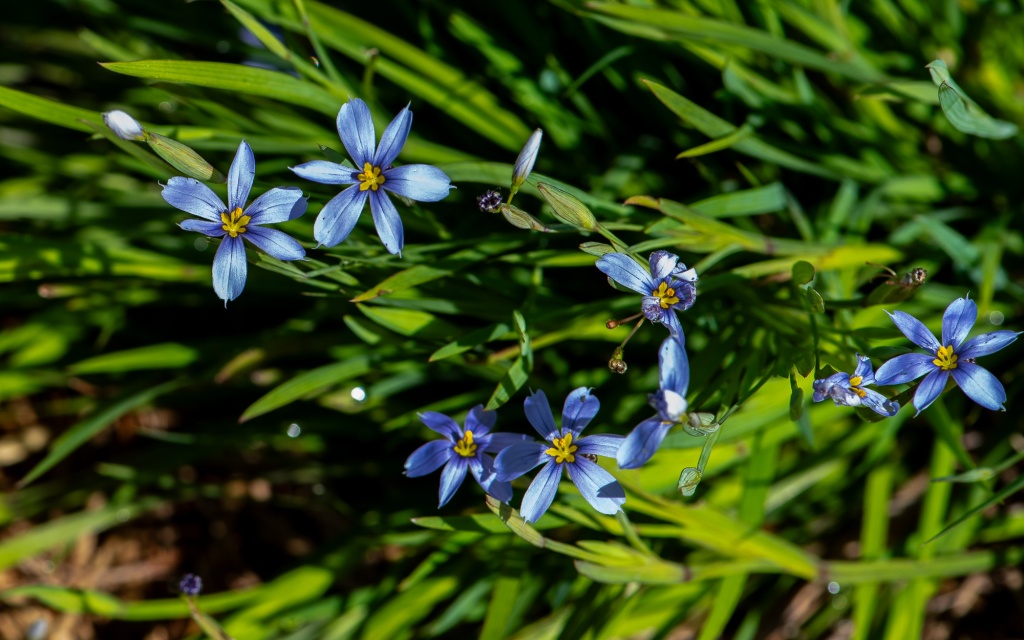
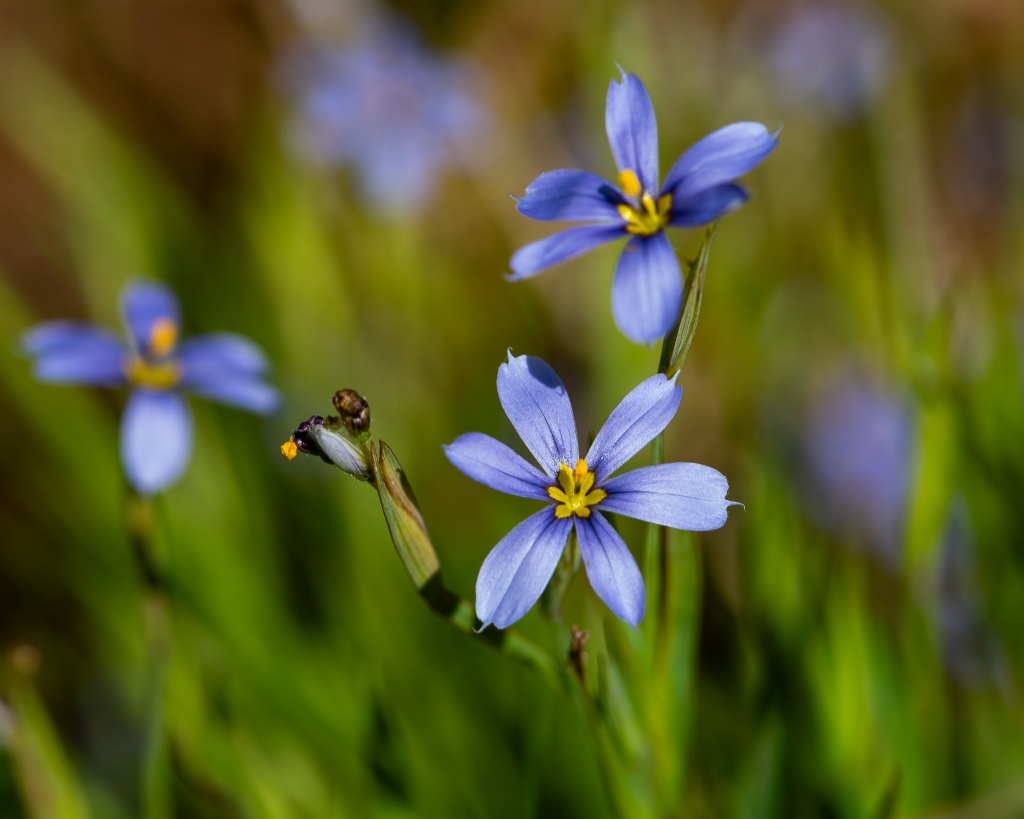
Unique foliage. Uncommonly beautiful. Fourpetal St. Johnswort (Hypericum tetrapetalum) punctuated the woods in several places.
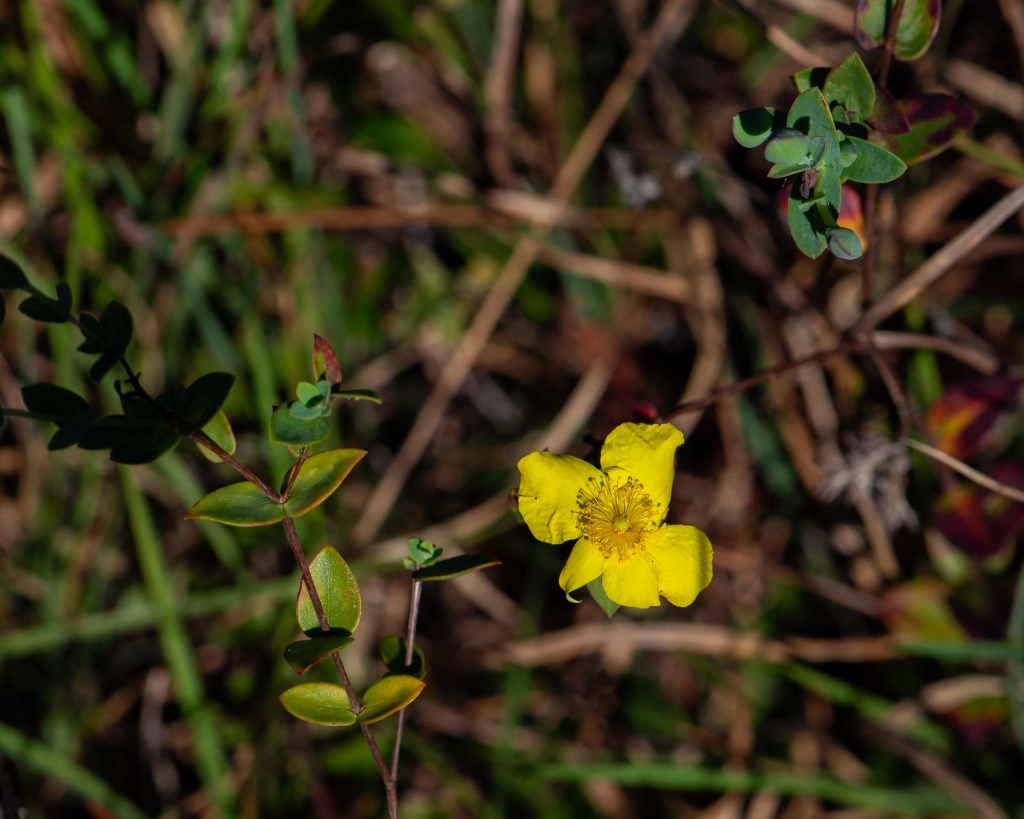
A female Downy Woodpecker hopped along an oak tree branch in search of brunch.
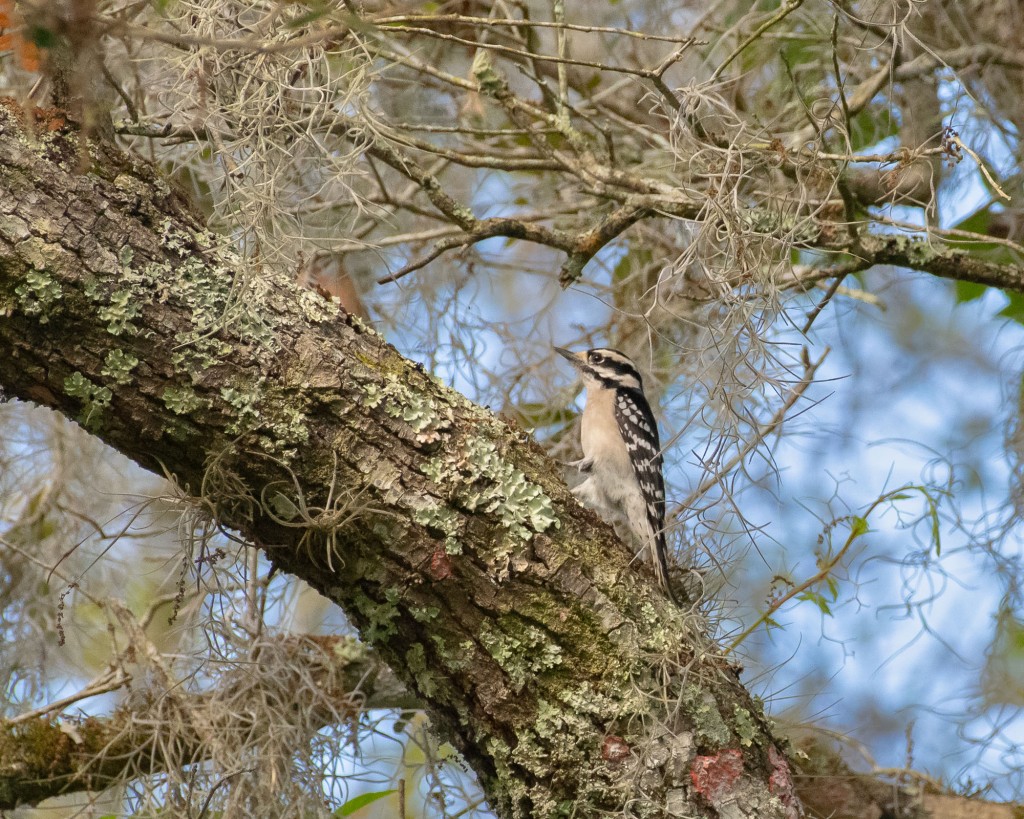
Spring has sprung and butterflies have magically appeared everywhere. This Cloudless Sulphur (Phoebis sennae) is gathering minerals from the damp mud.
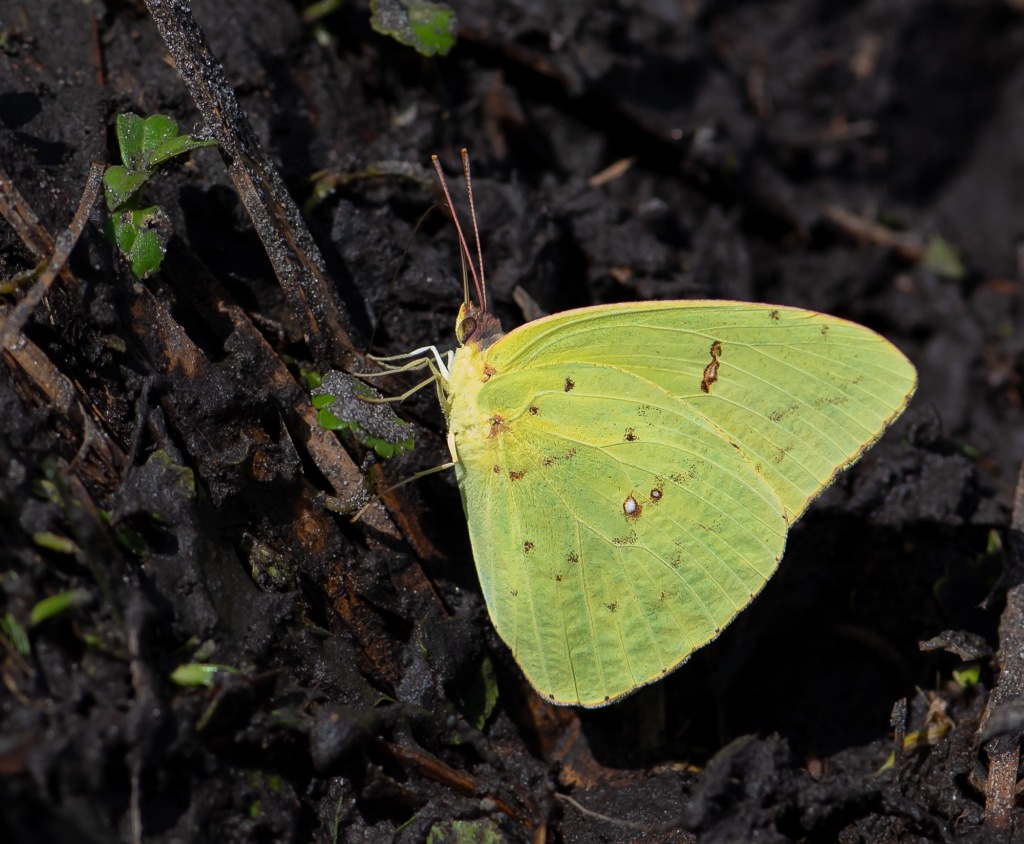
Small. Yellow. Gorgeous. Common Yellow Stargrass (Hypoxis curtissii) would be completely overlooked if not for those bright blooms.

One might also overlook the Yellow-throated Warbler, if it weren’t for that bright yellow throat. And the contrasting black and white plumage. Oh, and that wonderful Spring song.
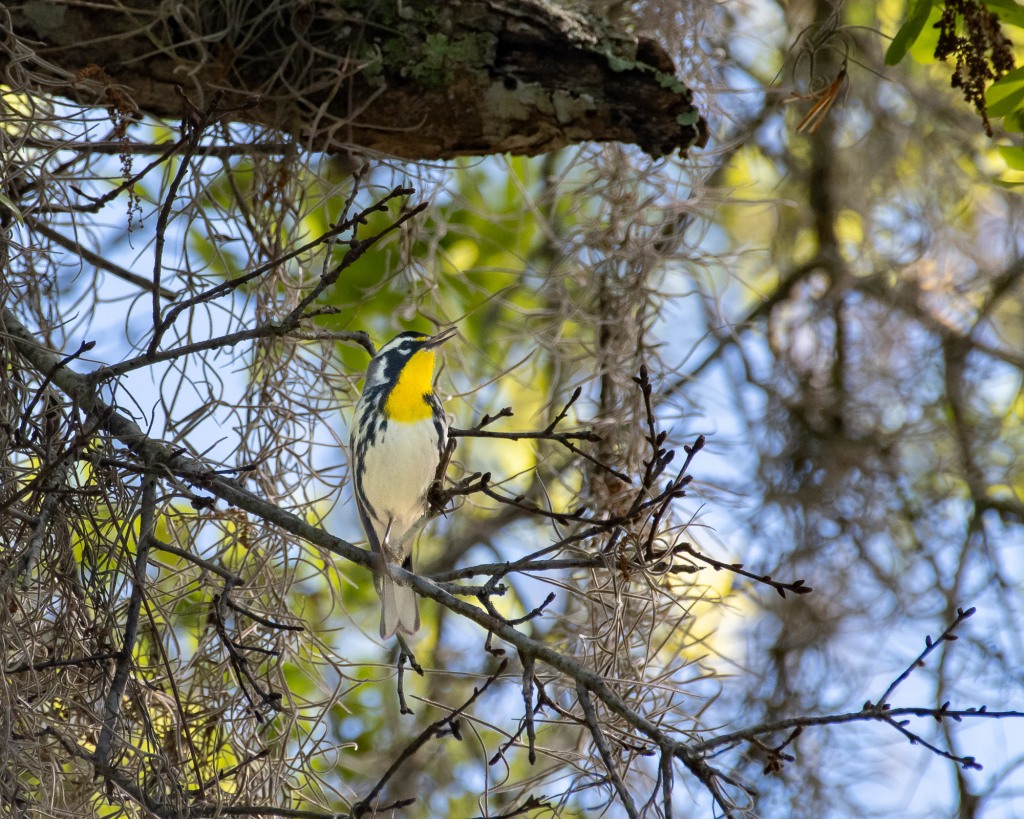
Red, black, white – the combination certainly gets one’s attention among brown and green foliage. In attempting to find a naval connection for the name of the Red Admiral (Vanessa atalanta) butterfly, I discovered in the late 18th century it was called the Red Admirable. Makes more sense to me.
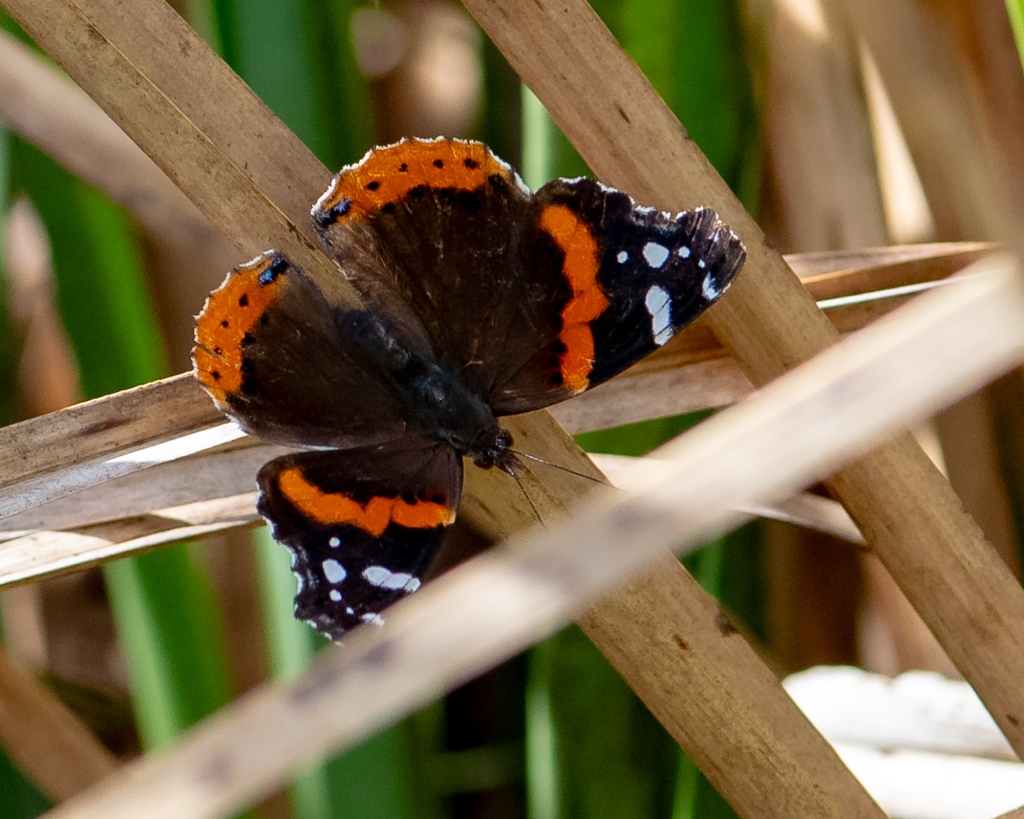
Wiry stems with smallish yellow flowers are beginning to become abundant. Each year, large patches of Leavenworth’s Tickseed (Coreopsis leavenworthii) brighten the countryside.
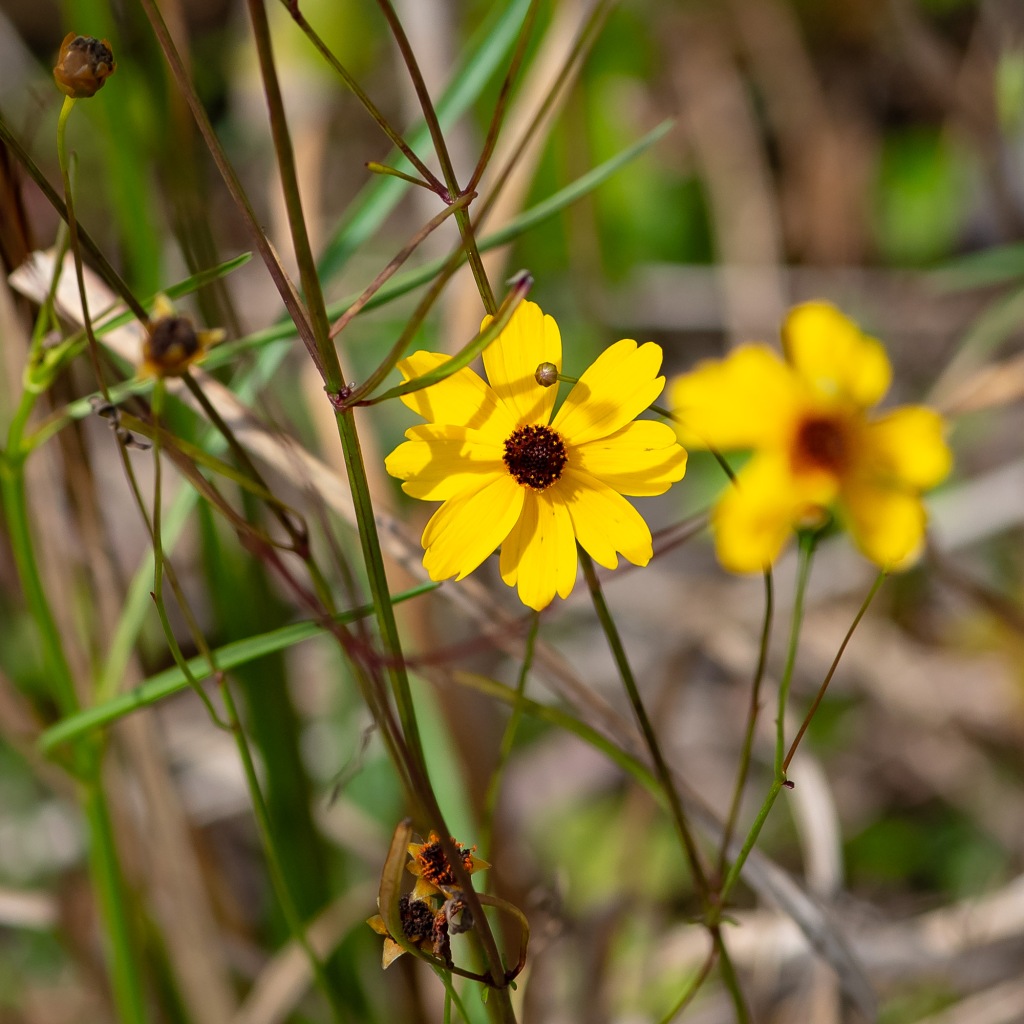
With basal leaves resembling that of some oak trees, Oakleaf Fleabane (Erigeron quercifolius) is very common in our area. Although the blooms are short-lived, plants continue to produce well into the fall. Flowers range from white to pink to purple.
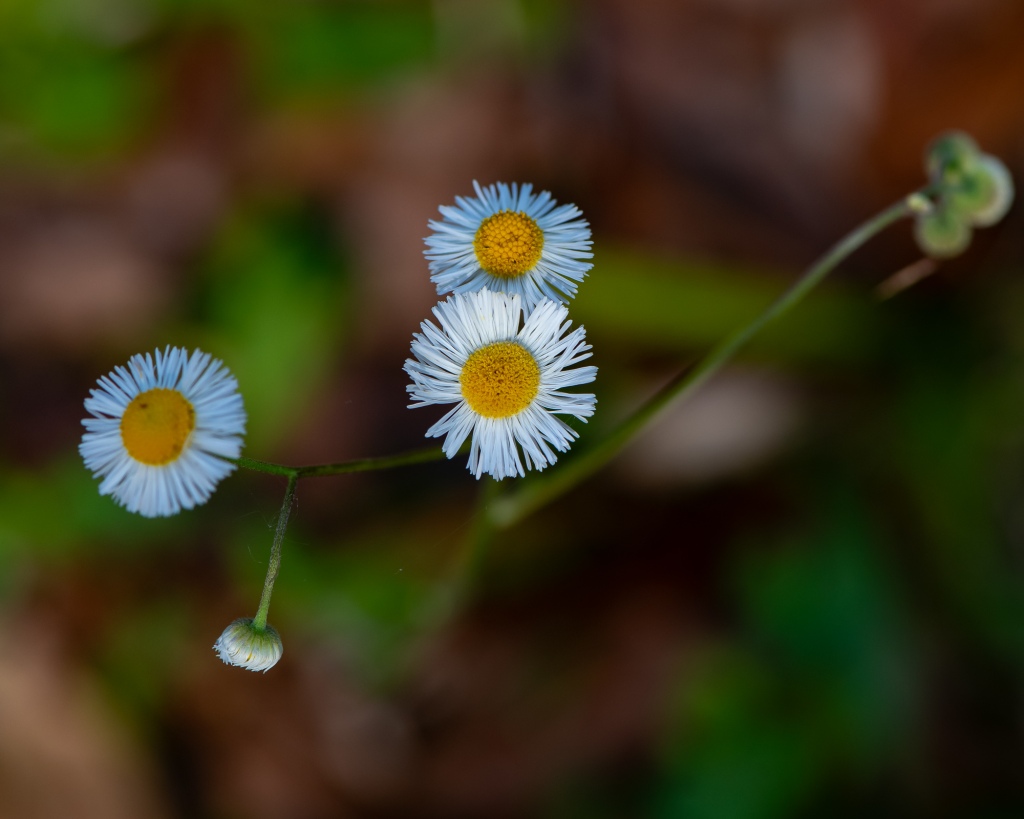
Florida’s most widespread species of small sulphur butterflies, the Little Yellow (Pyrisitia lisa) is somewhat helpful for this elderly photographer in that it tends to fly in straight lines as opposed to the zig-zag patterns preferred by its relatives. Perching once in awhile is also extremely appreciated.

There are 30 species of Ludwigia listed for Florida, many of which are not native to the state. With its non-native sounding common name, turns out that the Mexican Primrose-Willow (Ludwigia octovalvis) is actually a native species. A very attractive one at that.

It’s difficult to believe a bird with yellow, orange, blue and green could be so hard to discern among leaves and branches. Once seen, we really appreciate the beauty of the Northern Parula. When it sings, our appreciation increases.

Walter’s Viburnum (Viburnum obovatum) is a shrubby tree which can grow to nearly 20 feet tall. It is also called Small-leaf Arrowood. The plant’s common name honors Thomas Walter (1740-89), English-born planter of South Carolina, who described this species in his Flora Caroliniana. Each Spring, we’re treated to profuse blooms of creamy flowers with yellow centers.
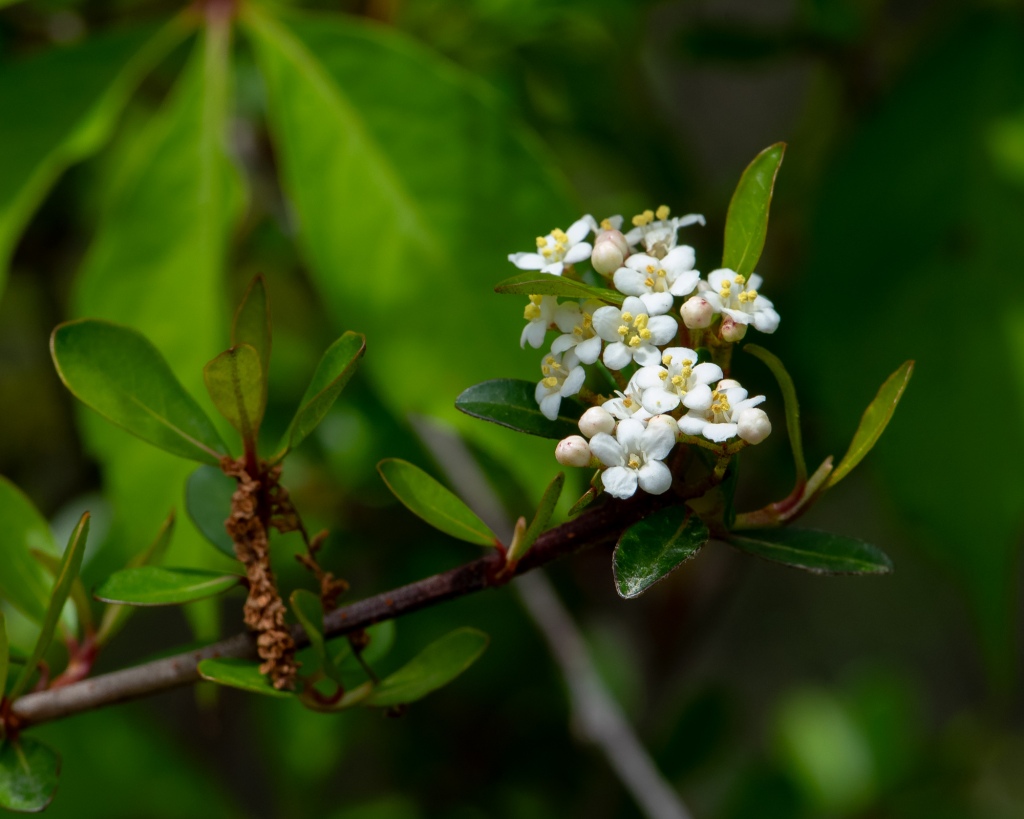
Anyone with a fear of spiders needs to spend some time with a jumping spider. Their appearance, fearless curiousity and downright cuddly nature may just be a cure for arachnophobia. I mean, come on, just look at that face! We appreciate the patience of this little Regal Jumping Spider (Phidippus regius), one of our favorite models.

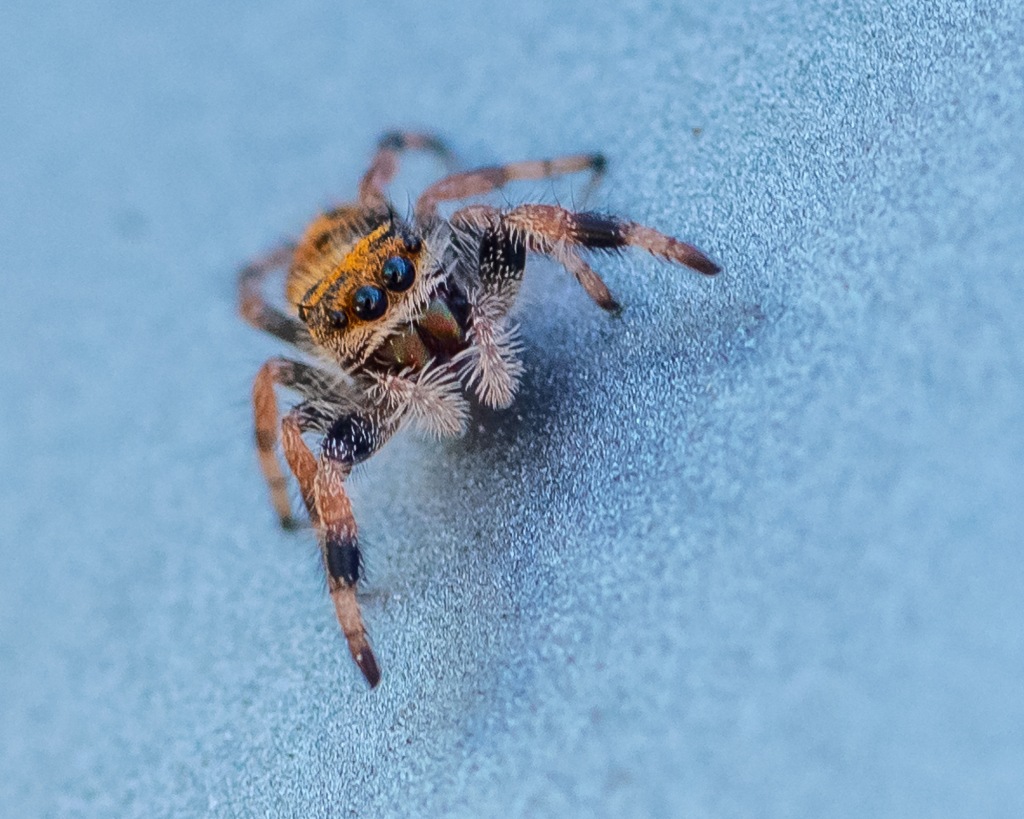
Our outing today was absolutely exhilarating. At this special season, a visit with Nature is truly as Mary Oliver describes: “… one of the forever gifts …”. We hope you are able to appreciate the gift of Spring, or for those even further south than us, Autumn. Nature has gifts for us to relish in every season.
Enjoy your search for a natural place and come back for a visit!
*“Come with me into the woods where spring is
advancing, as it does, no matter what,
not being singular or particular, but one
of the forever gifts, and certainly visible.”
― Mary Oliver, Dog Songs: Poems
